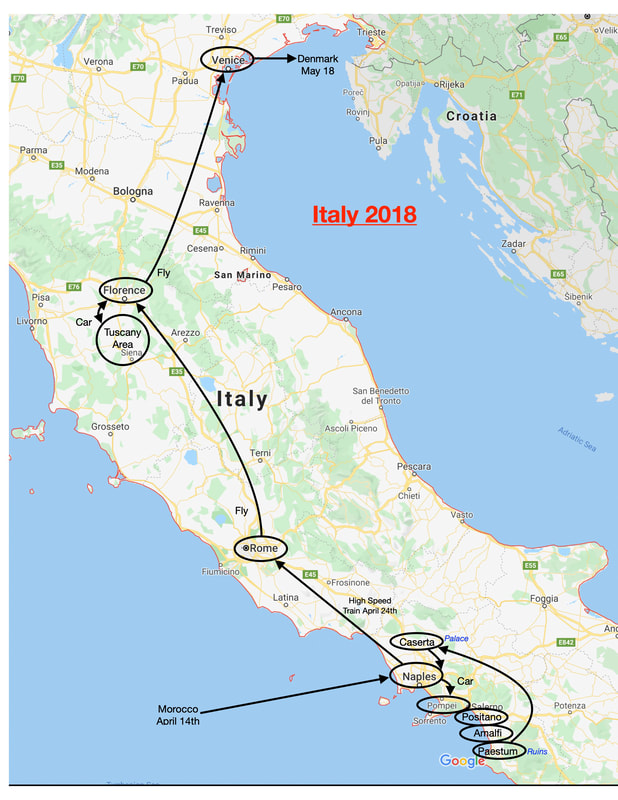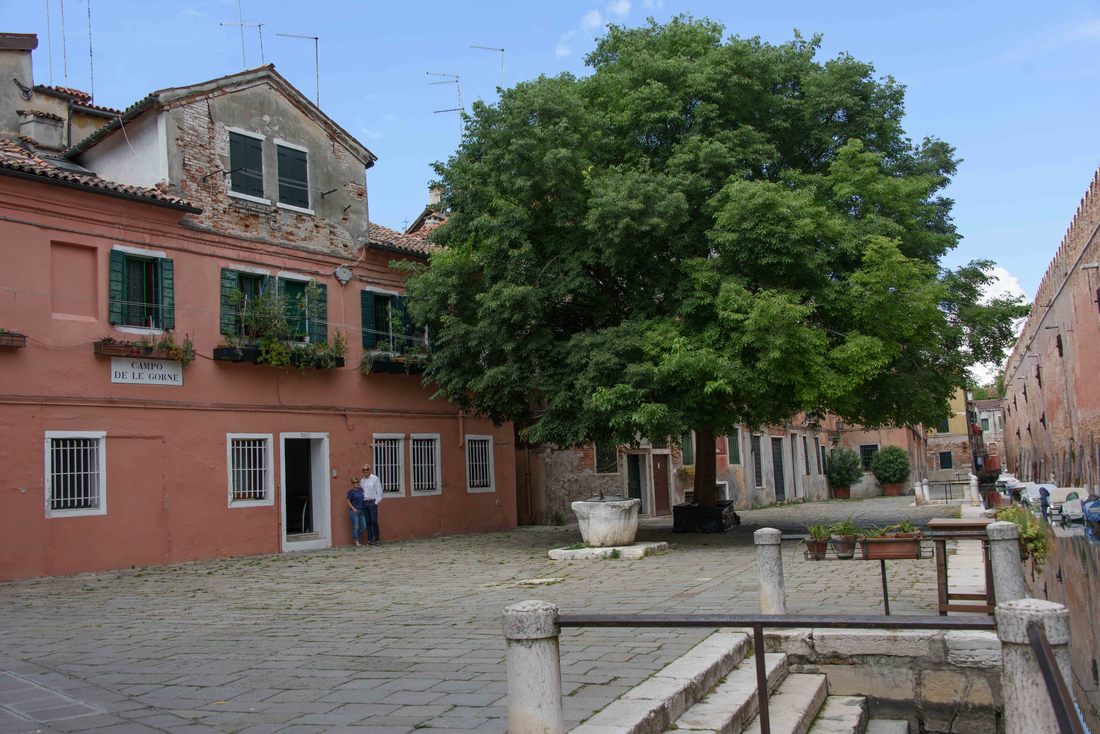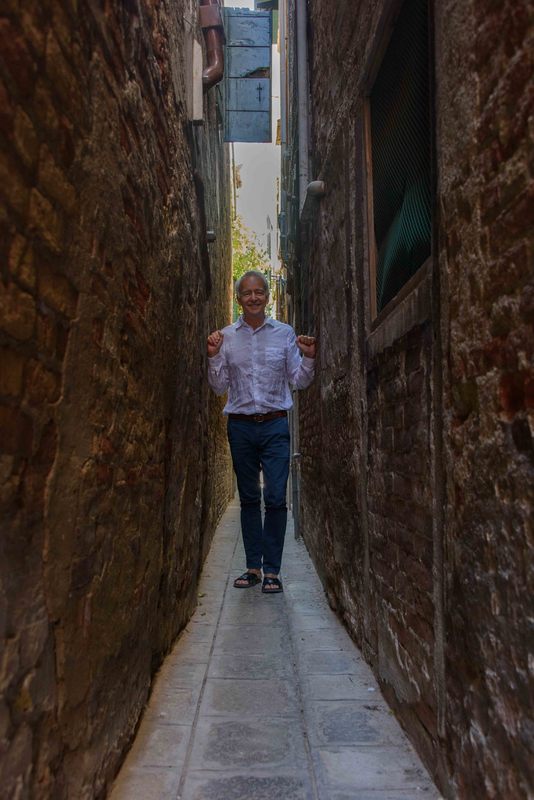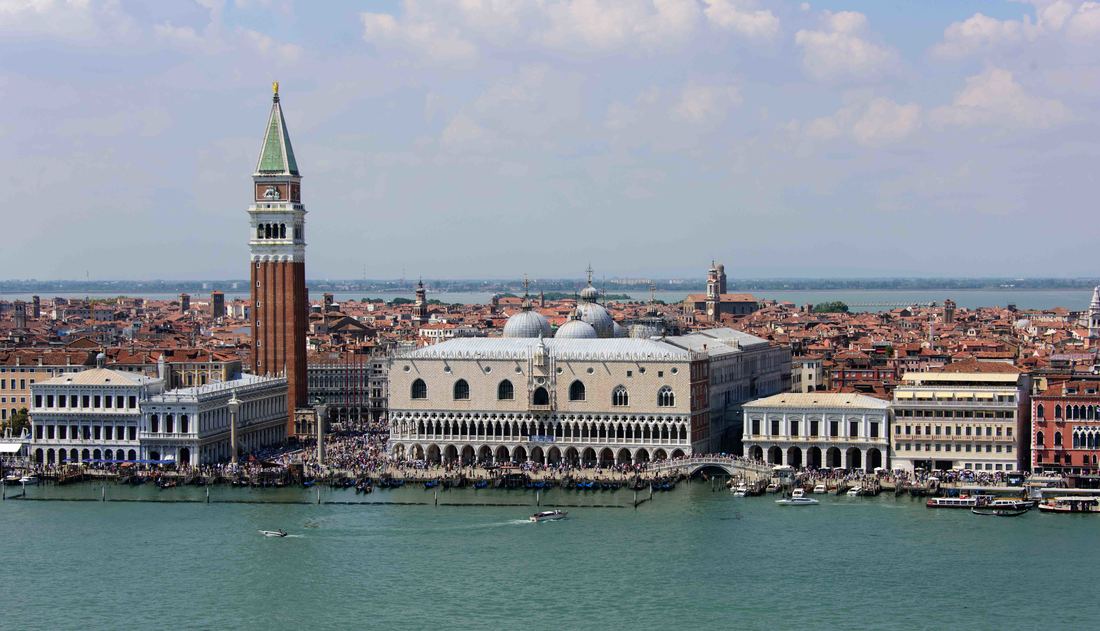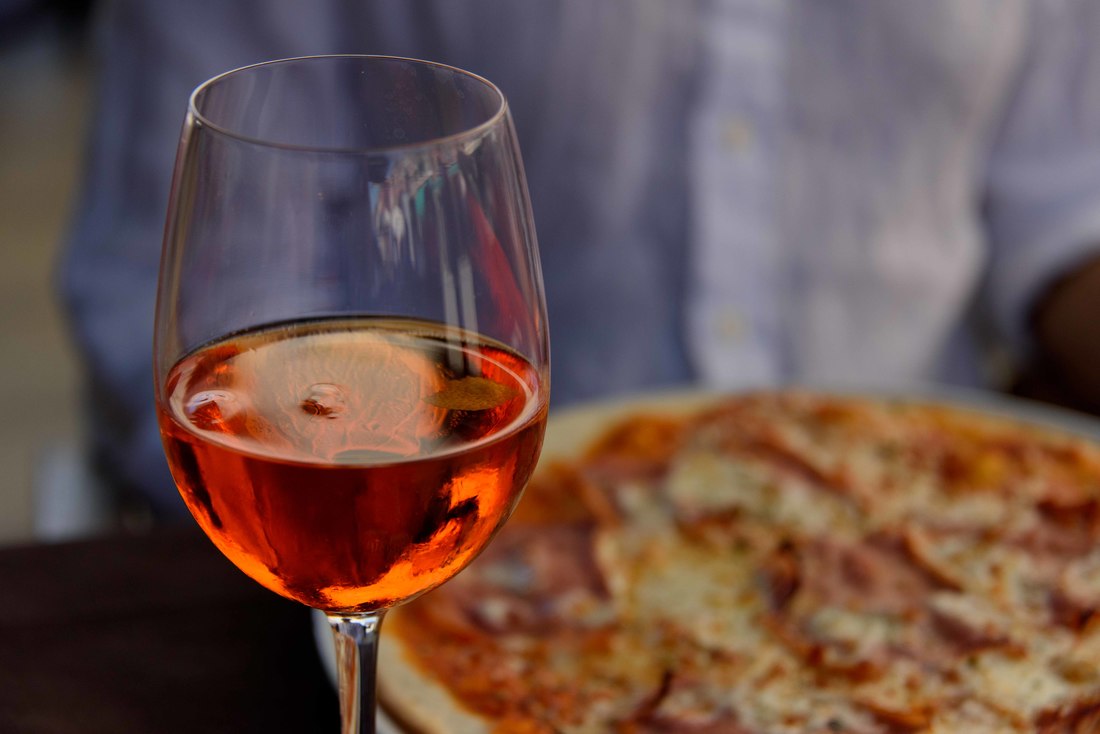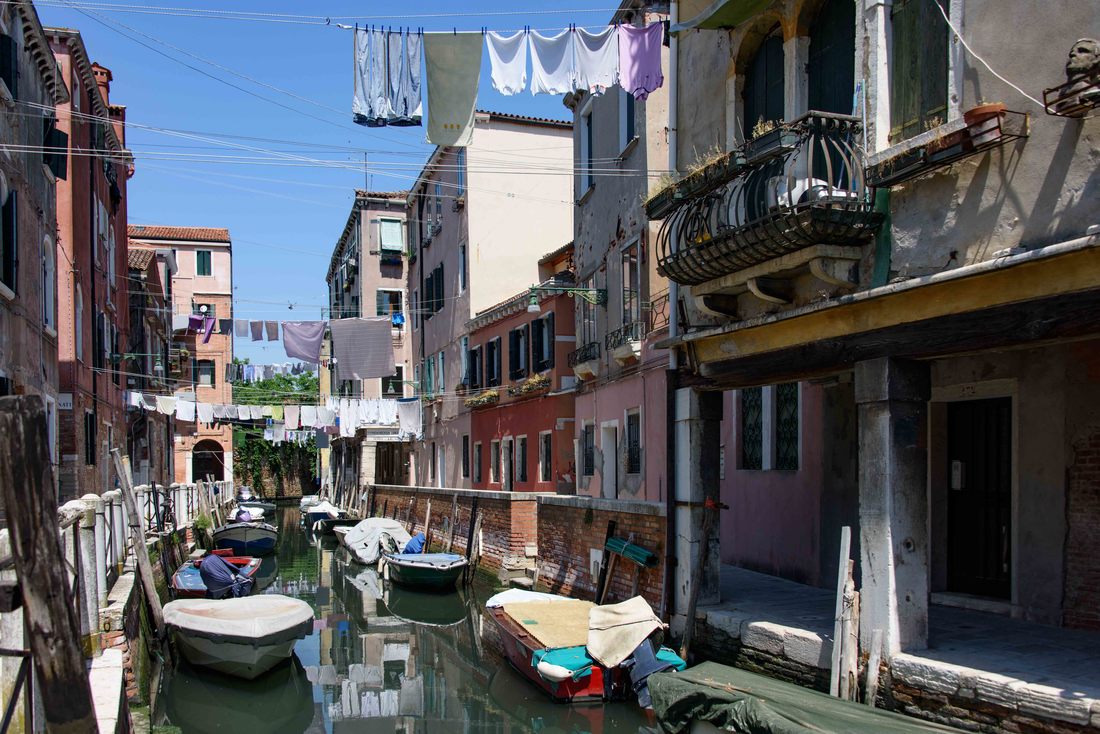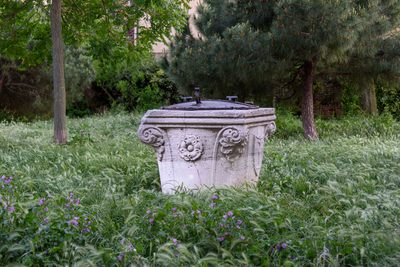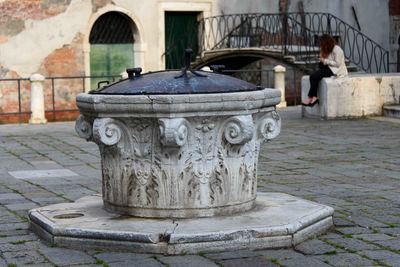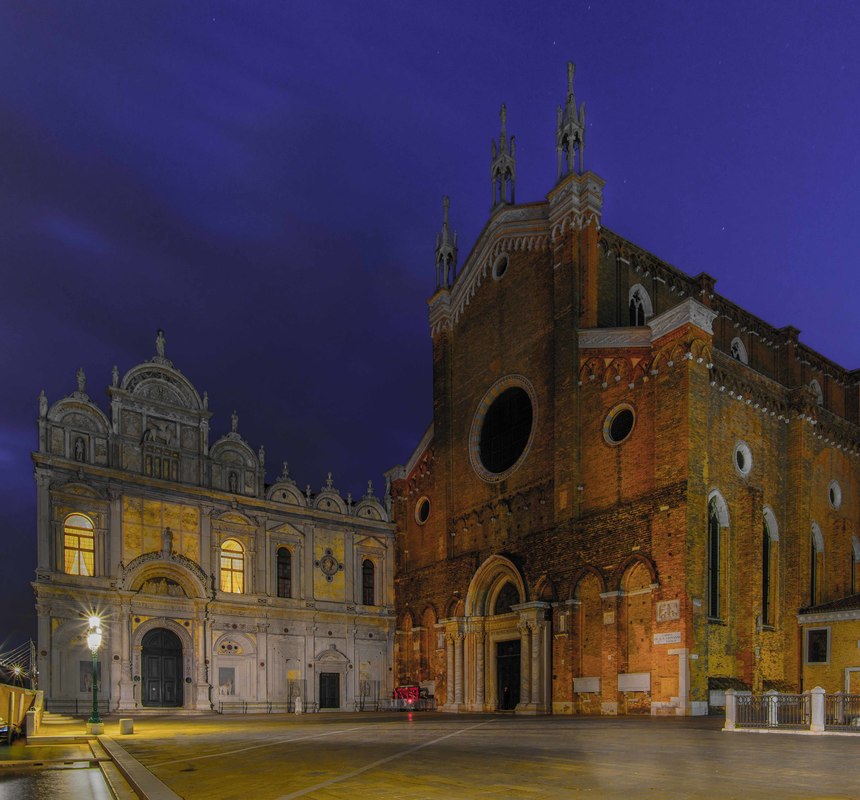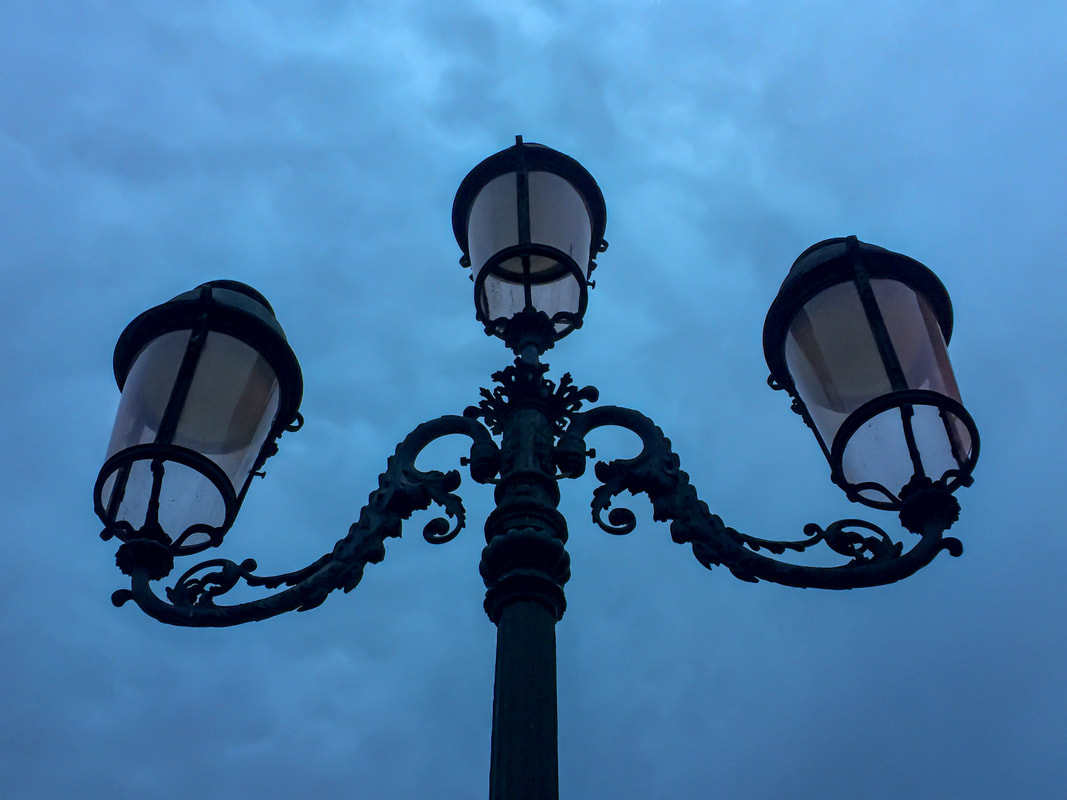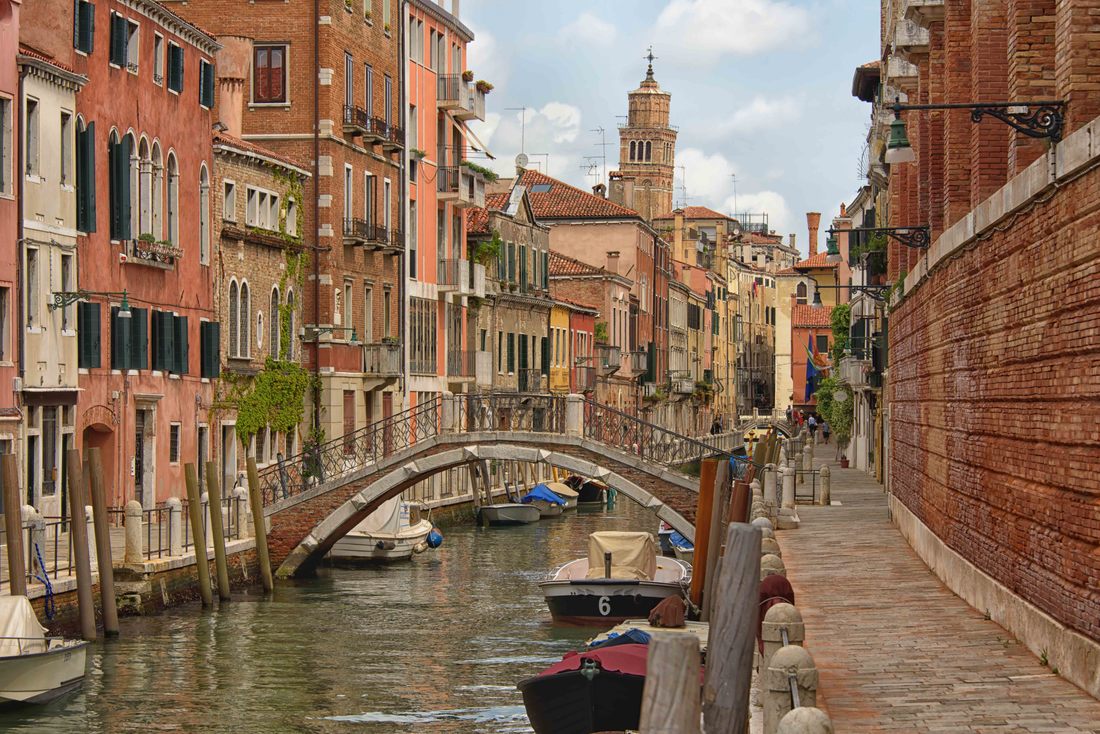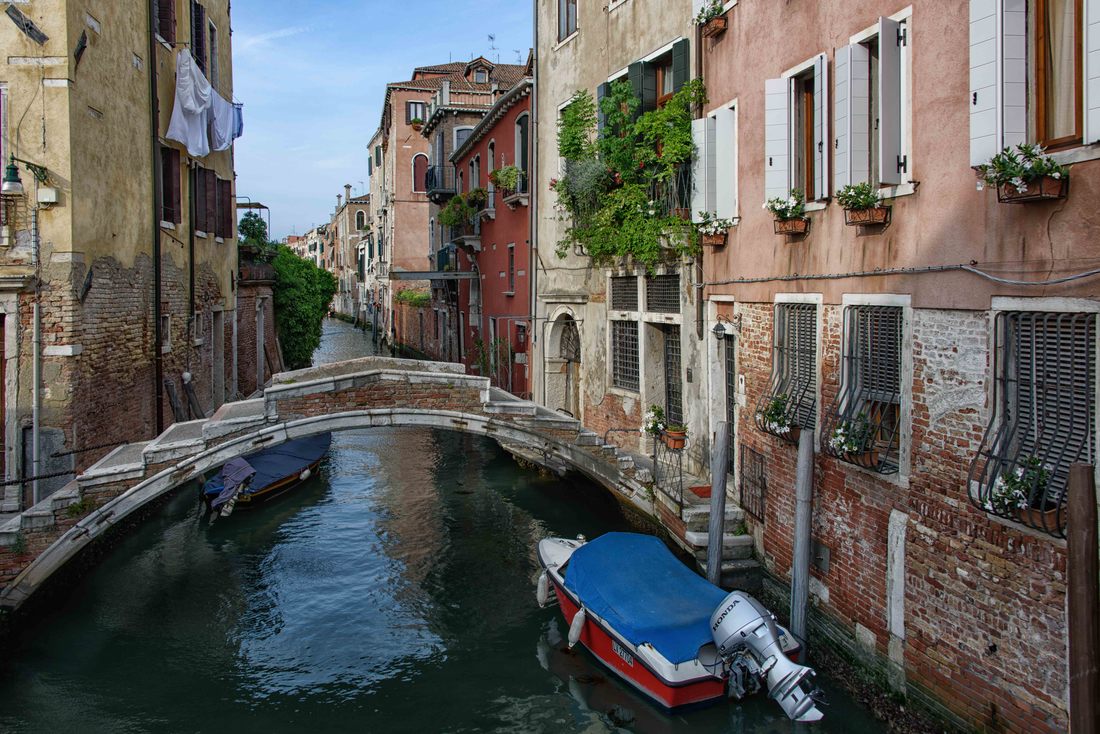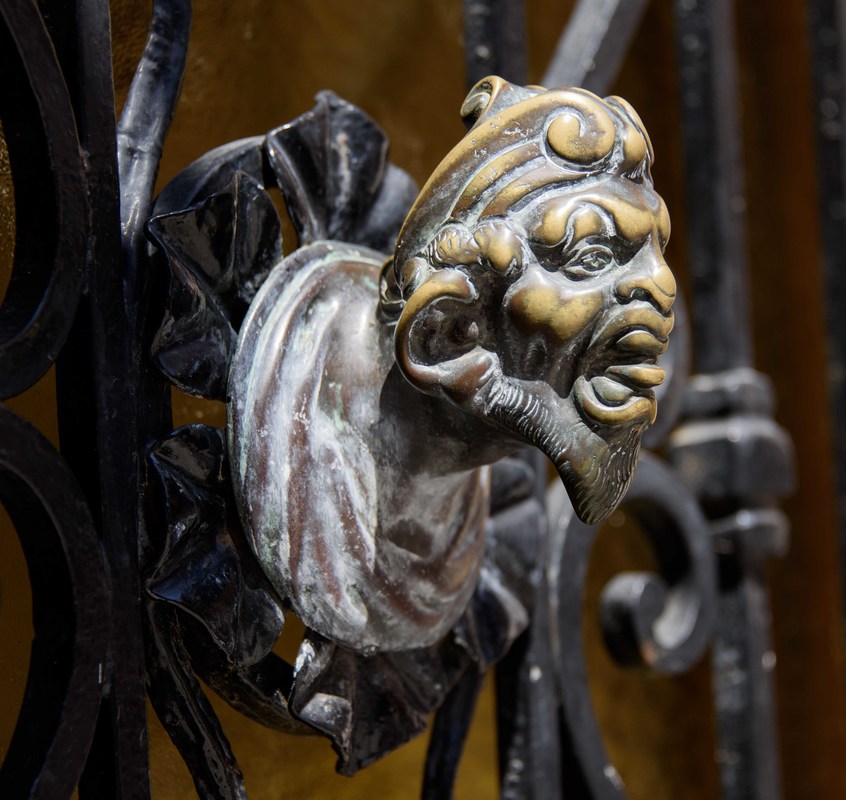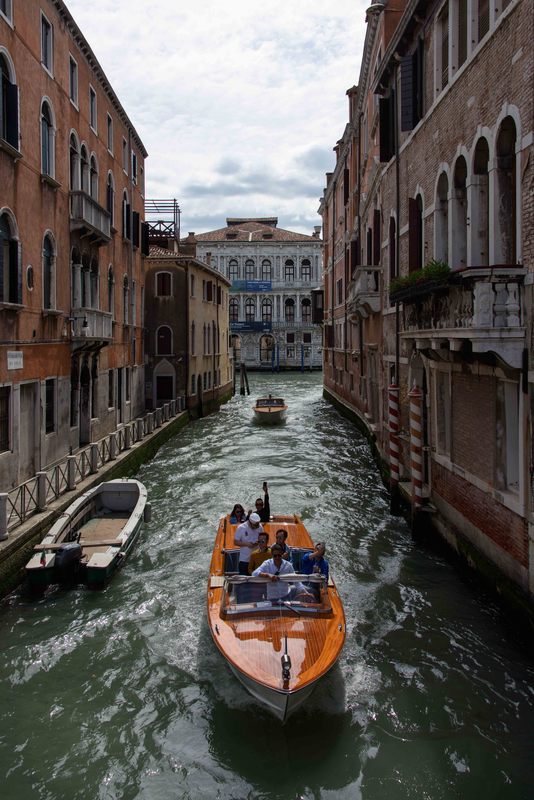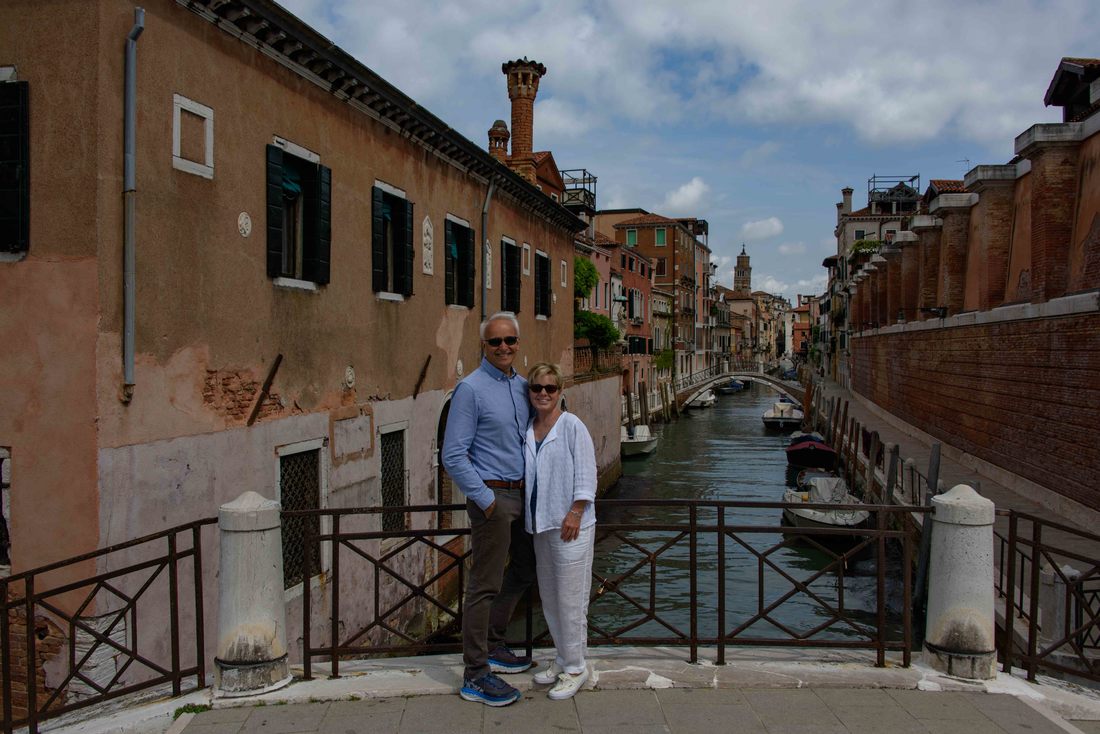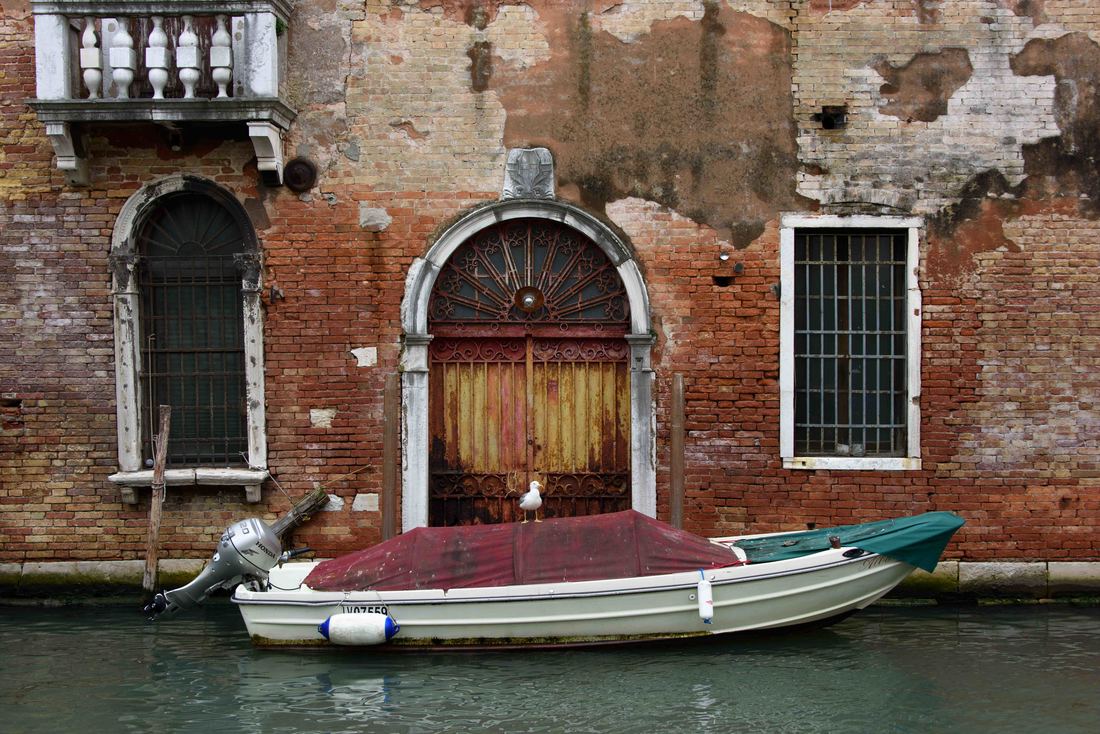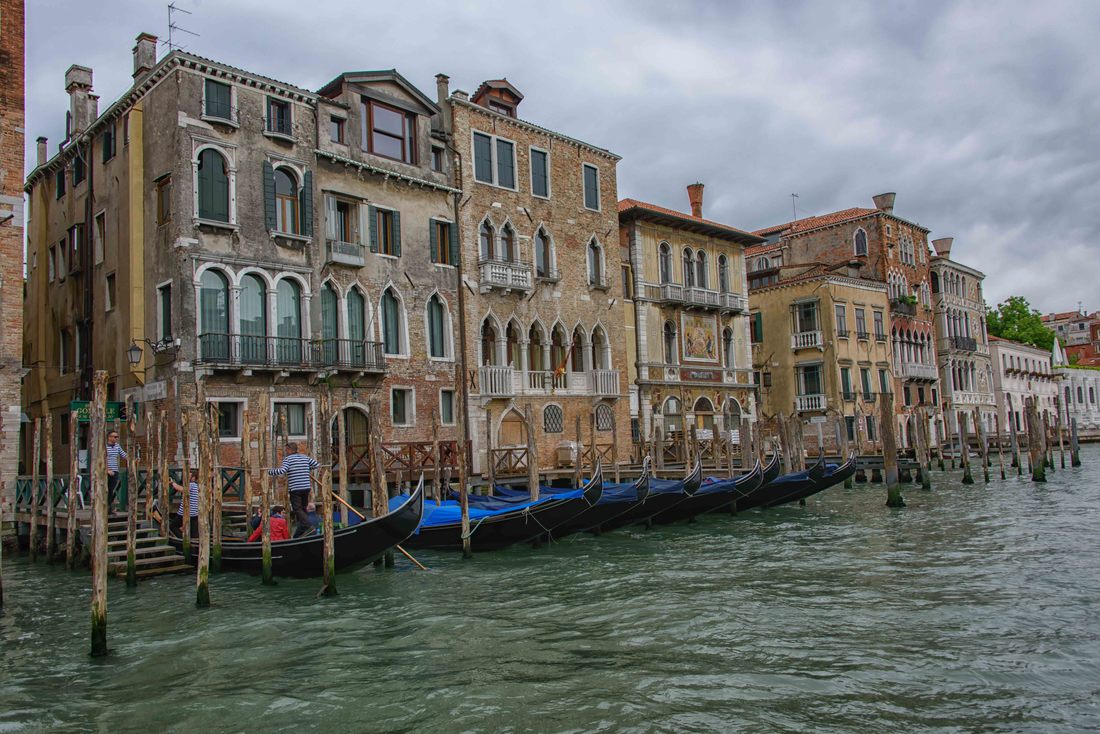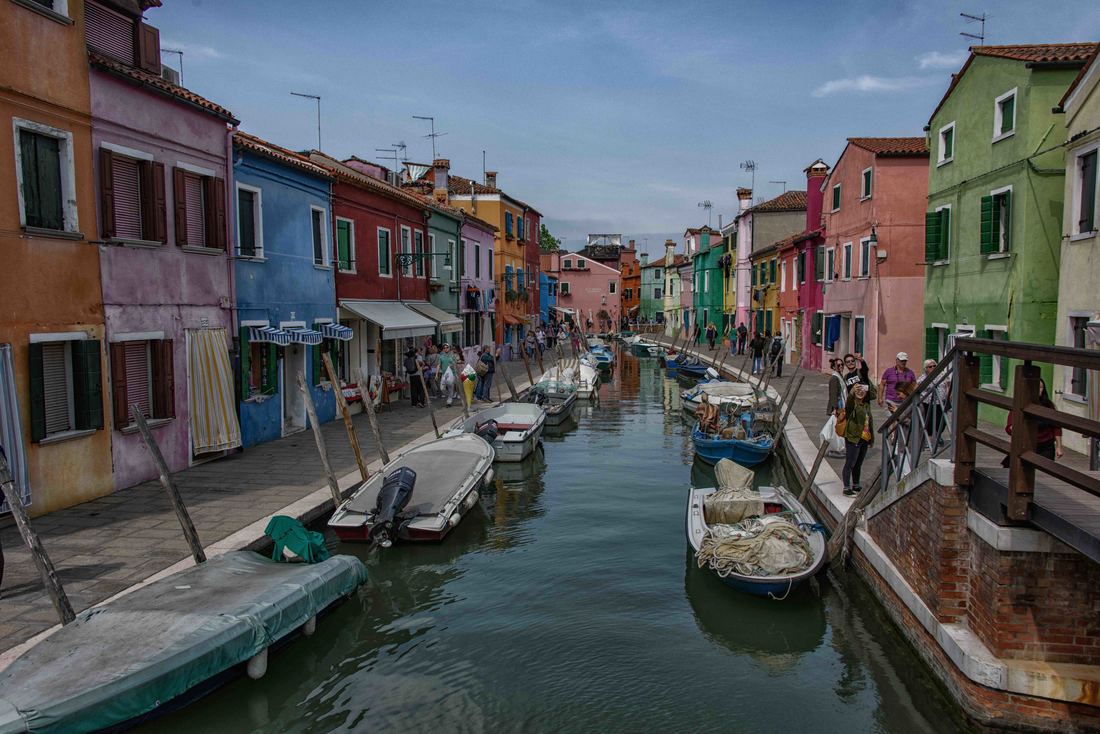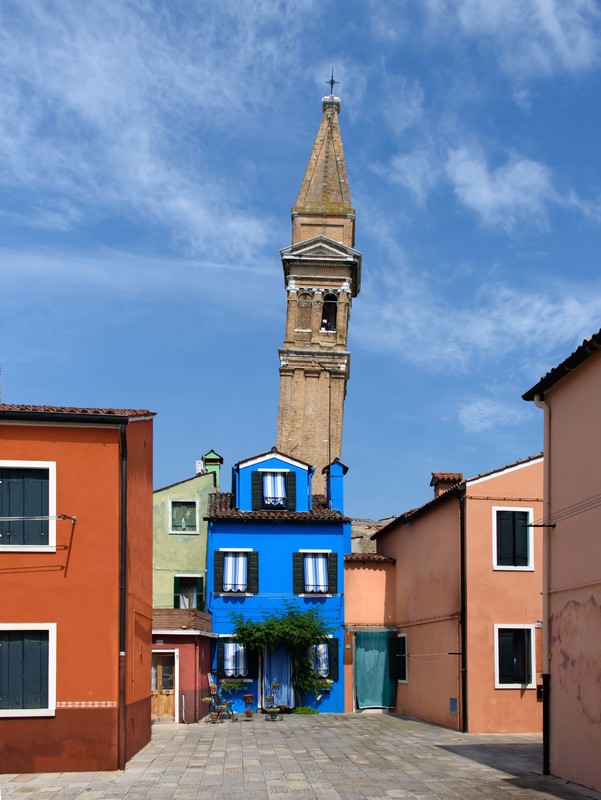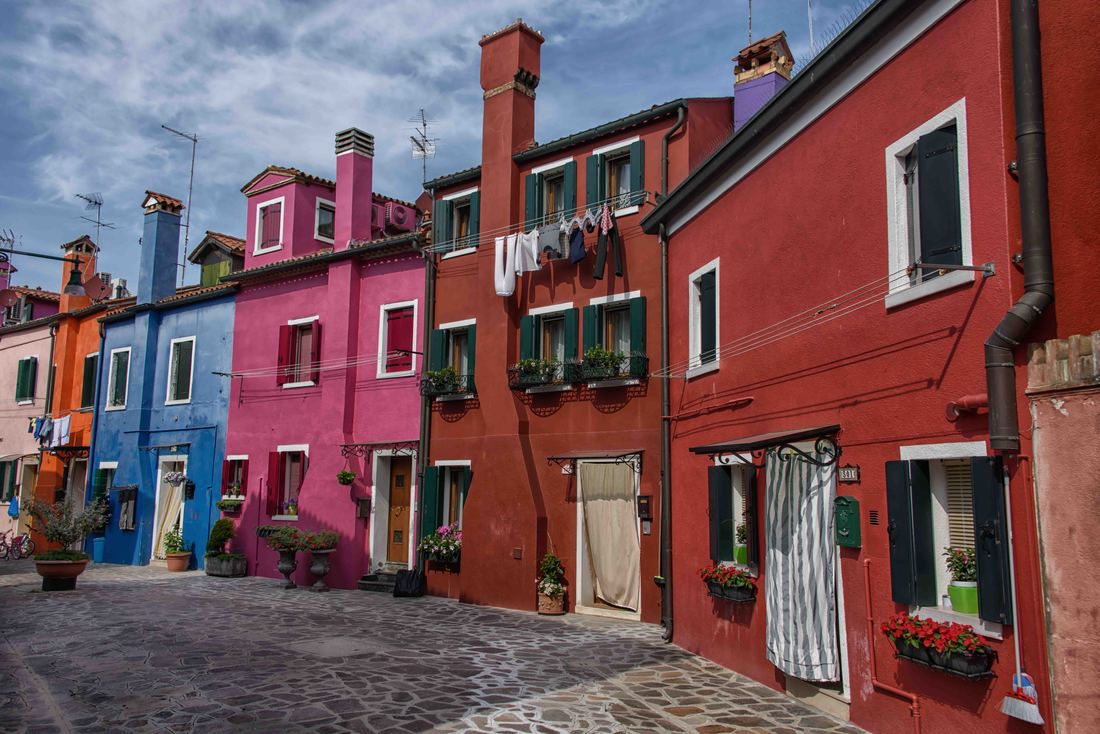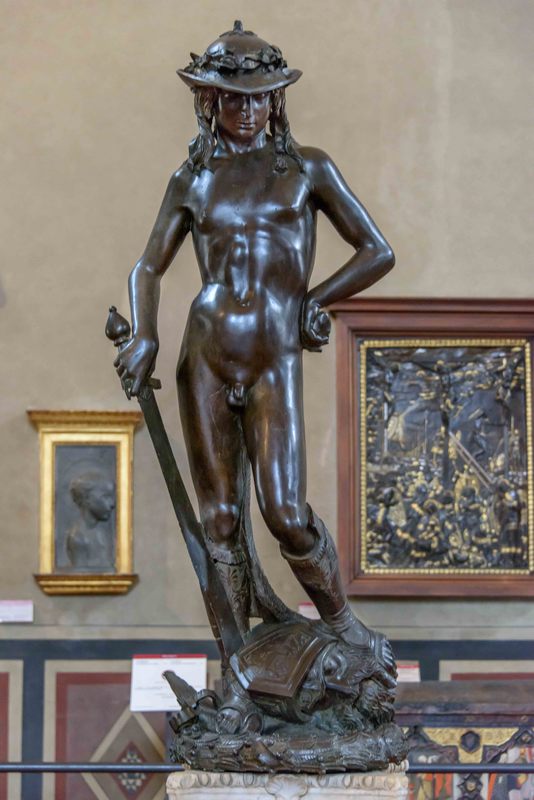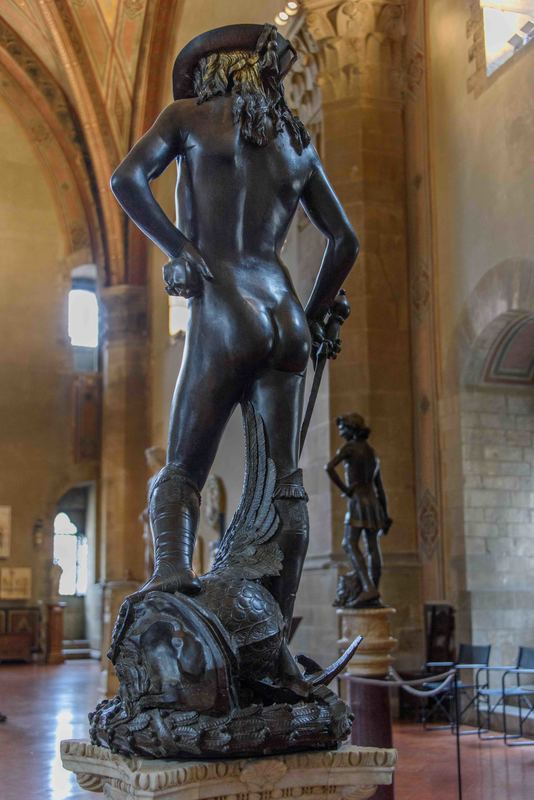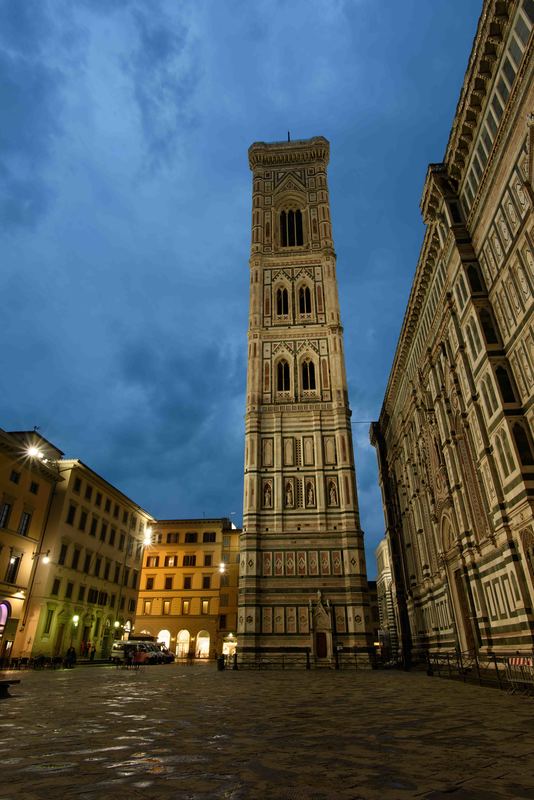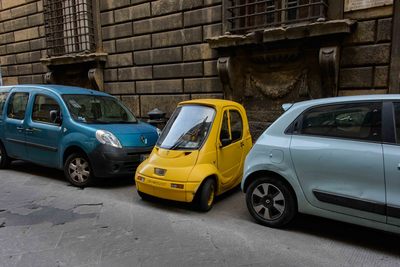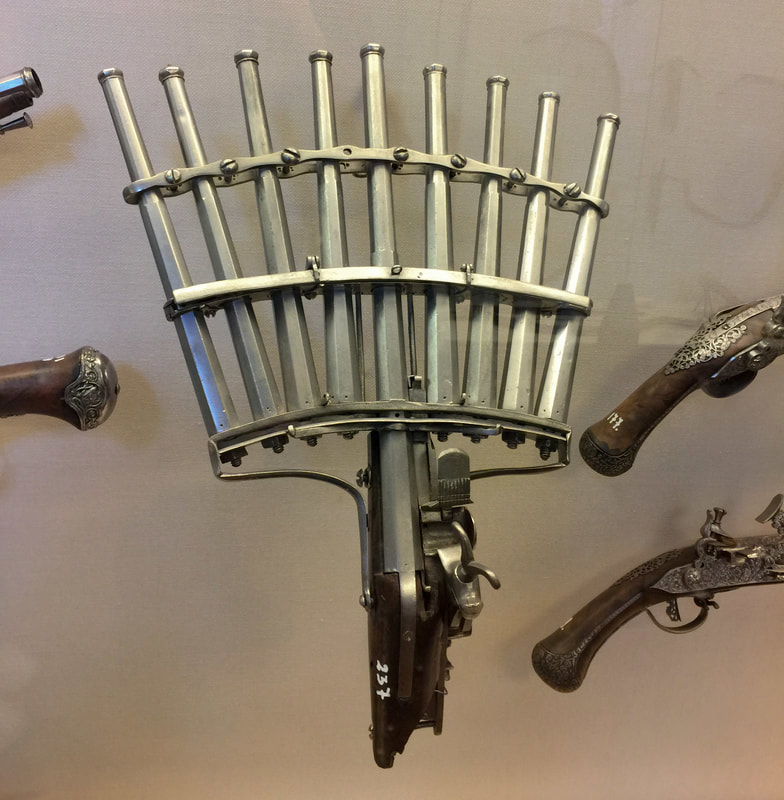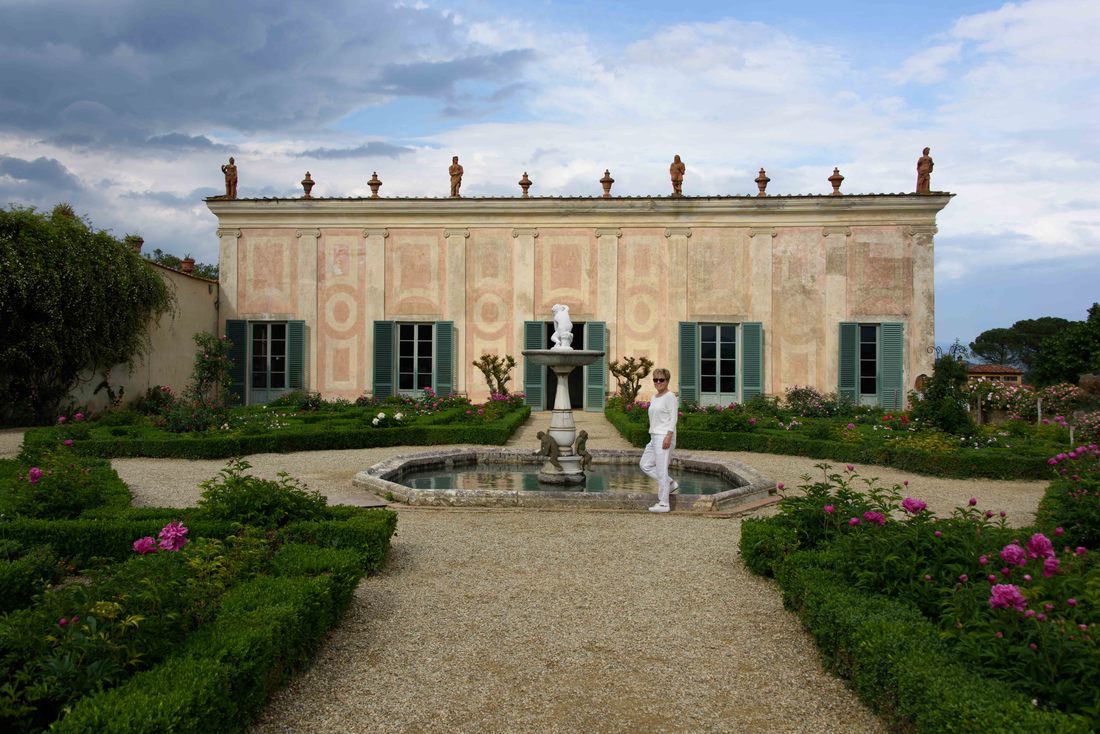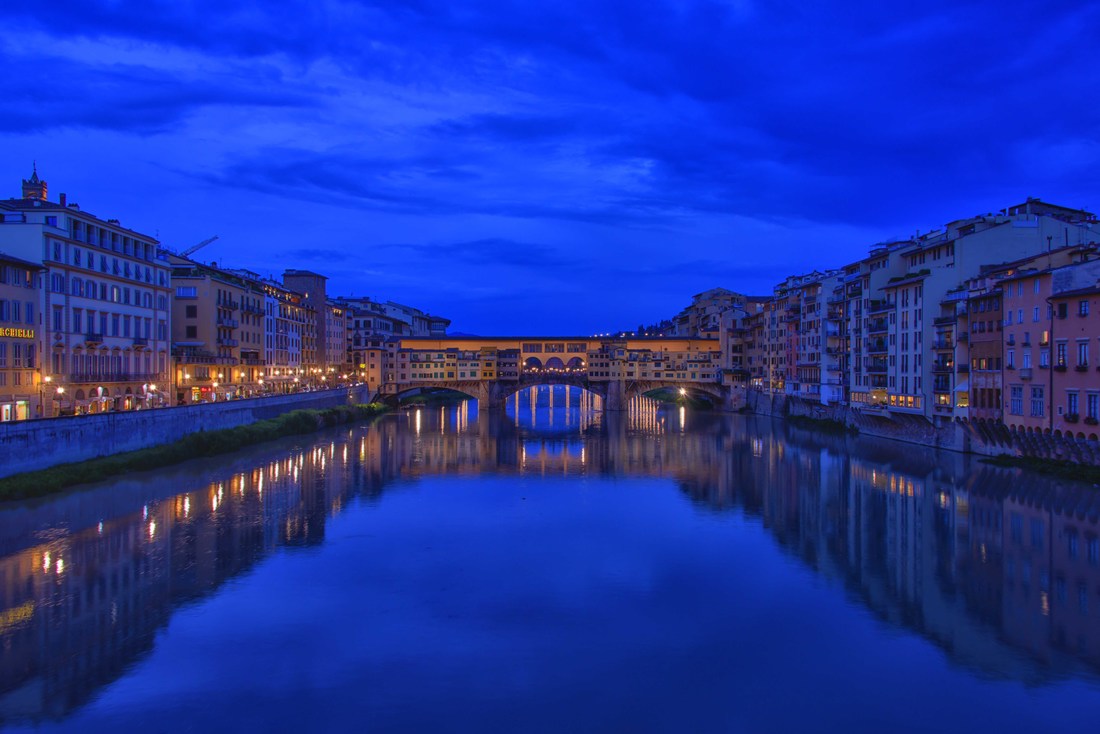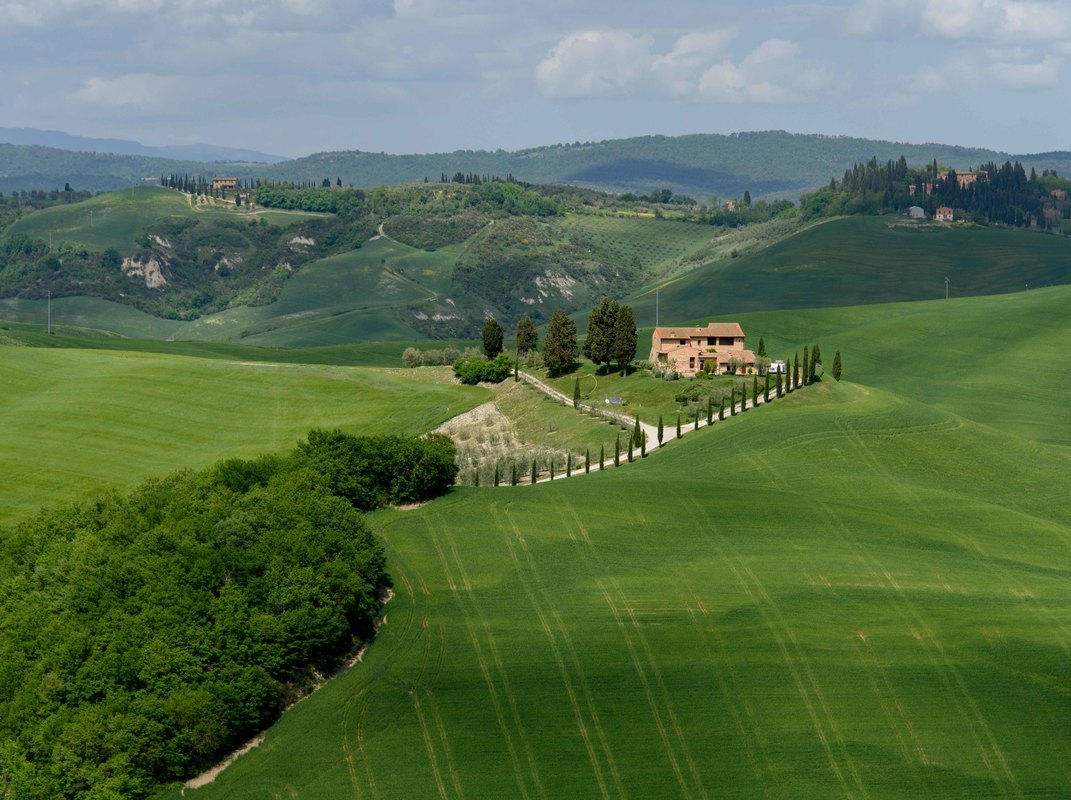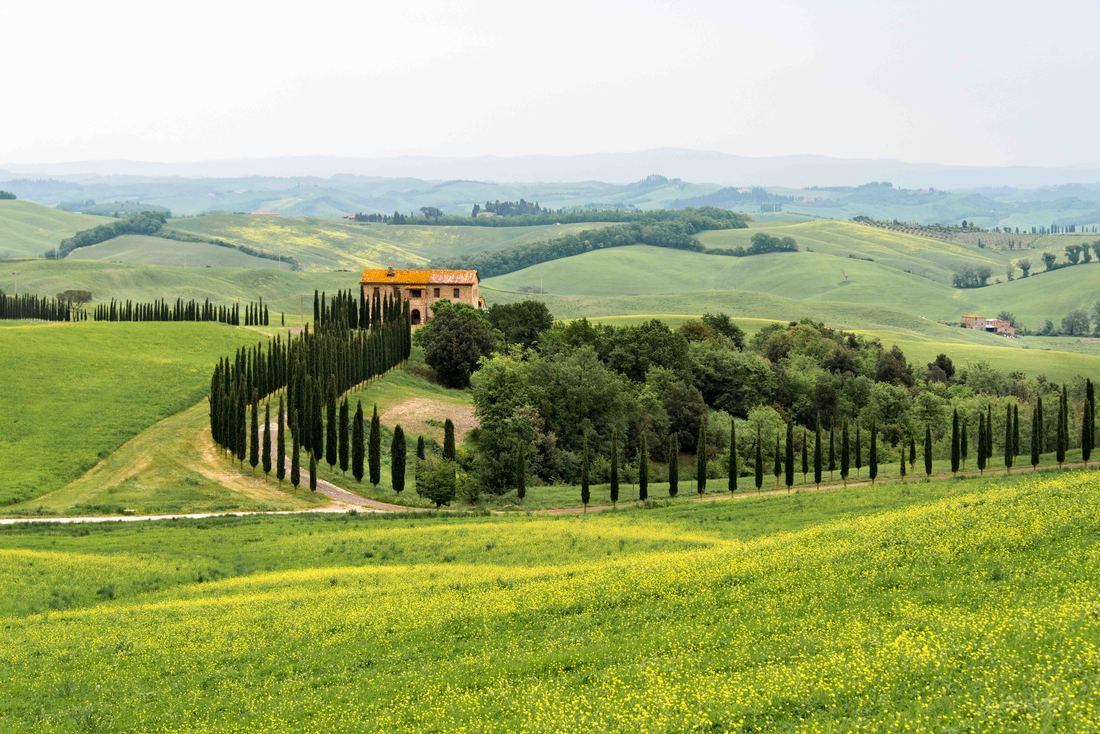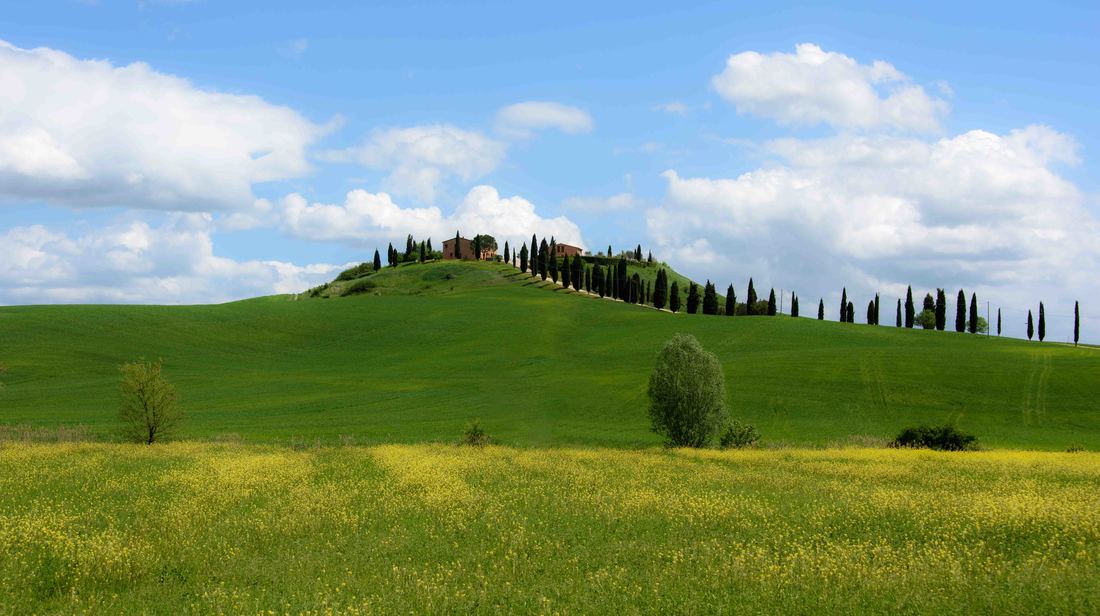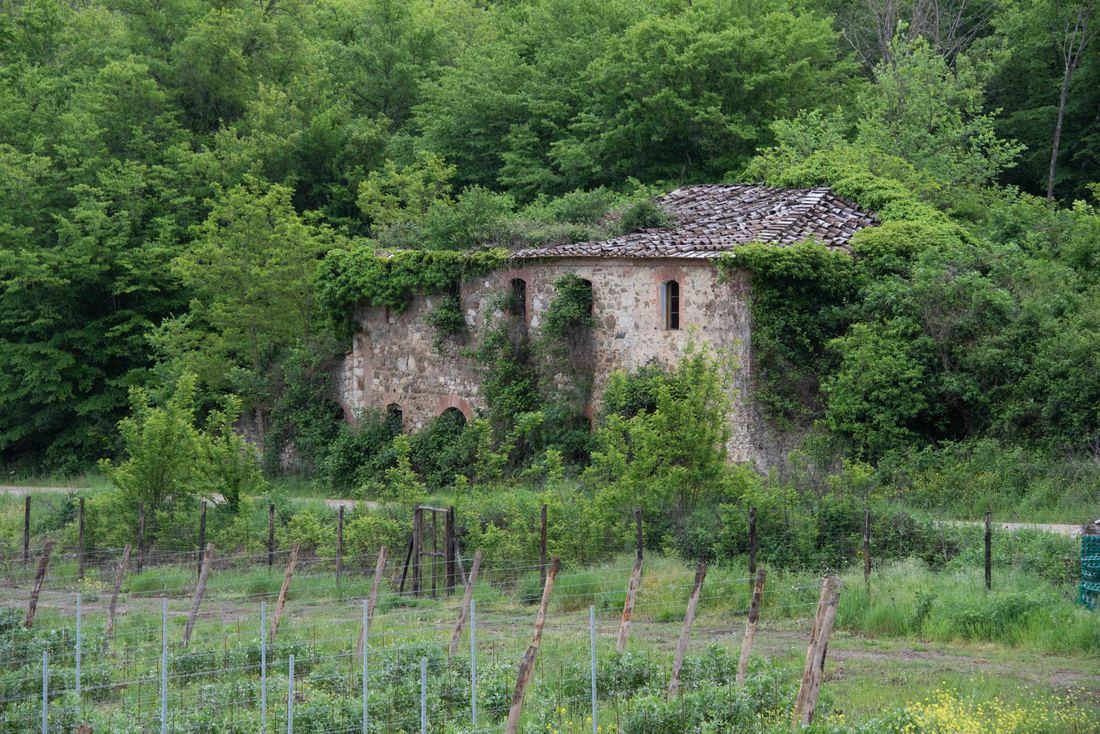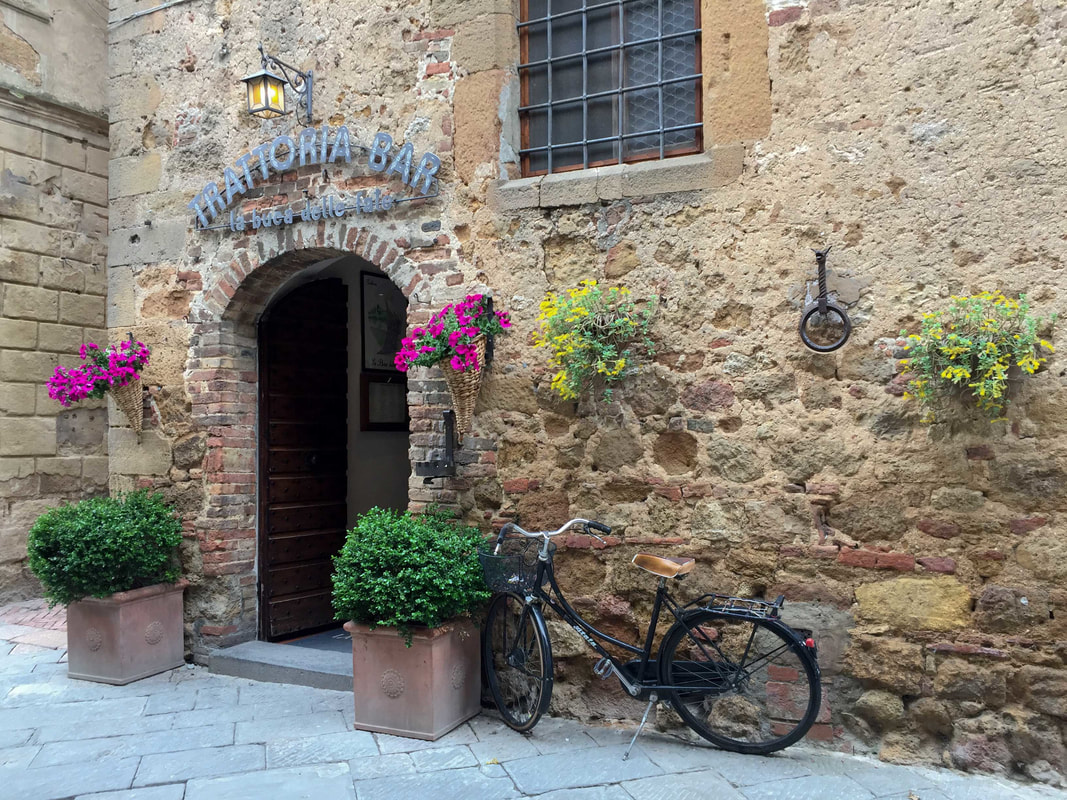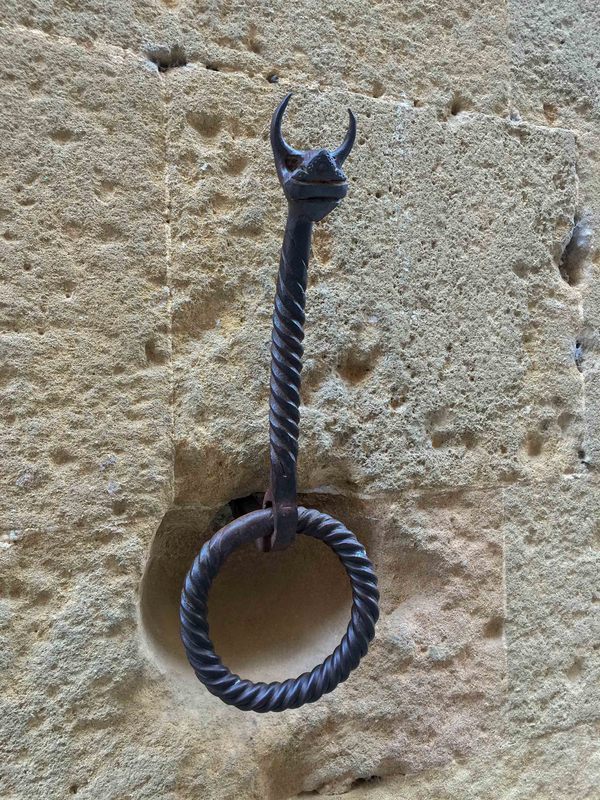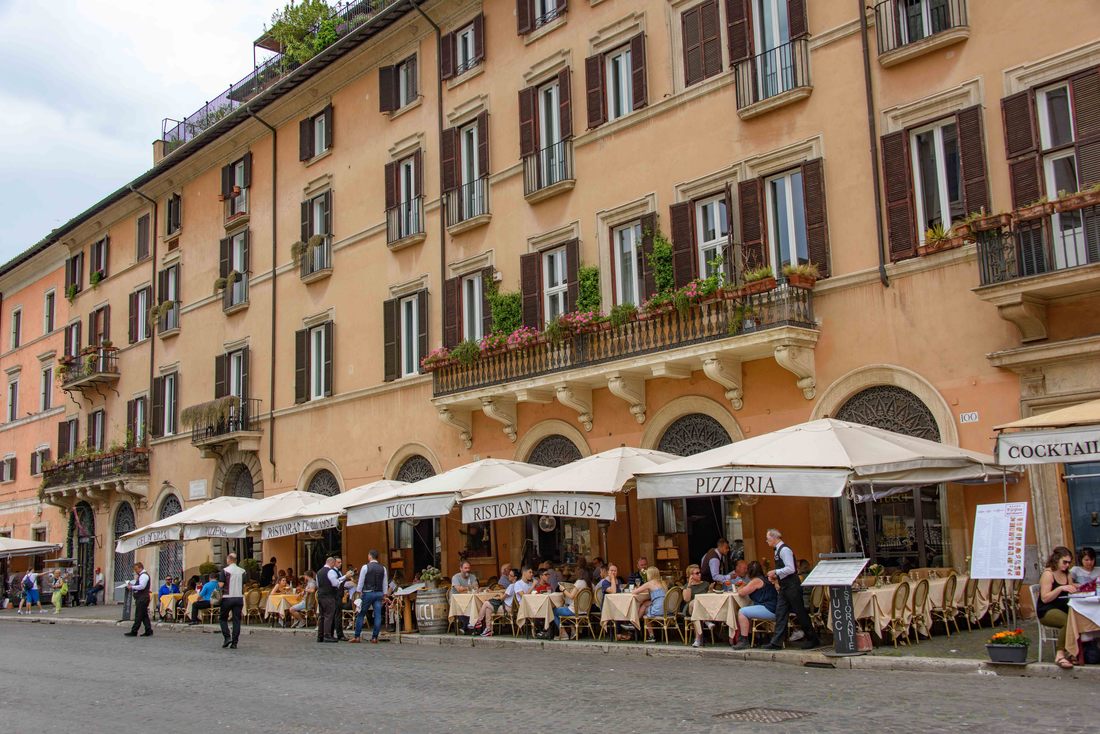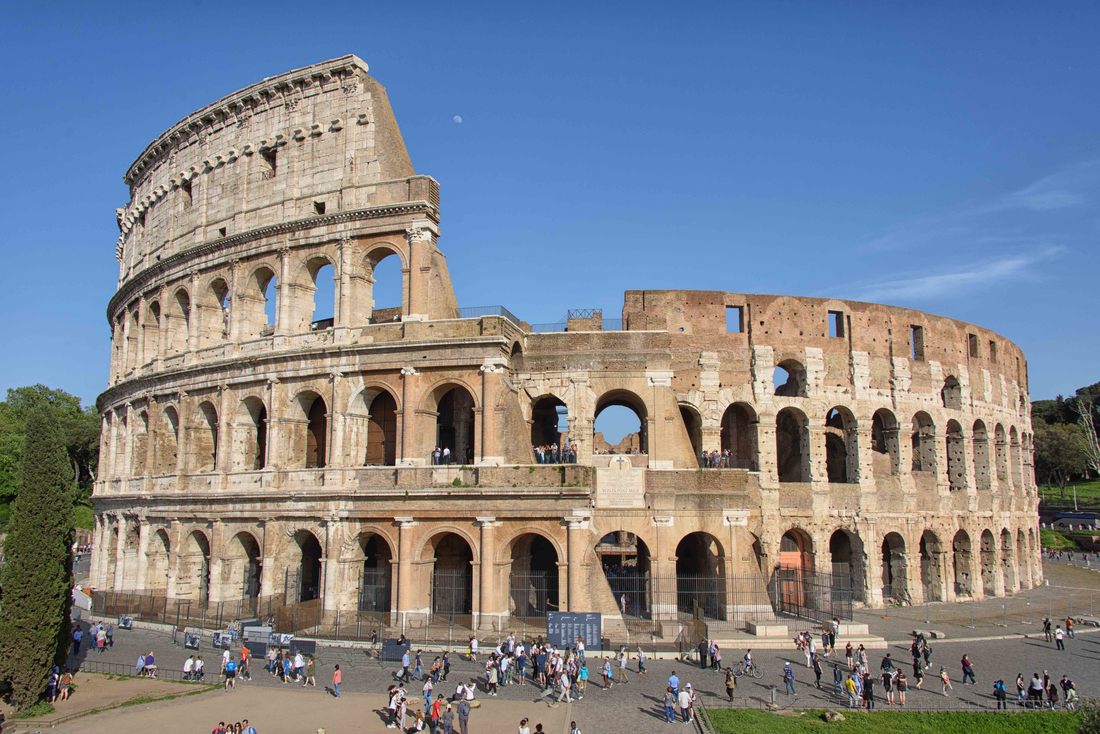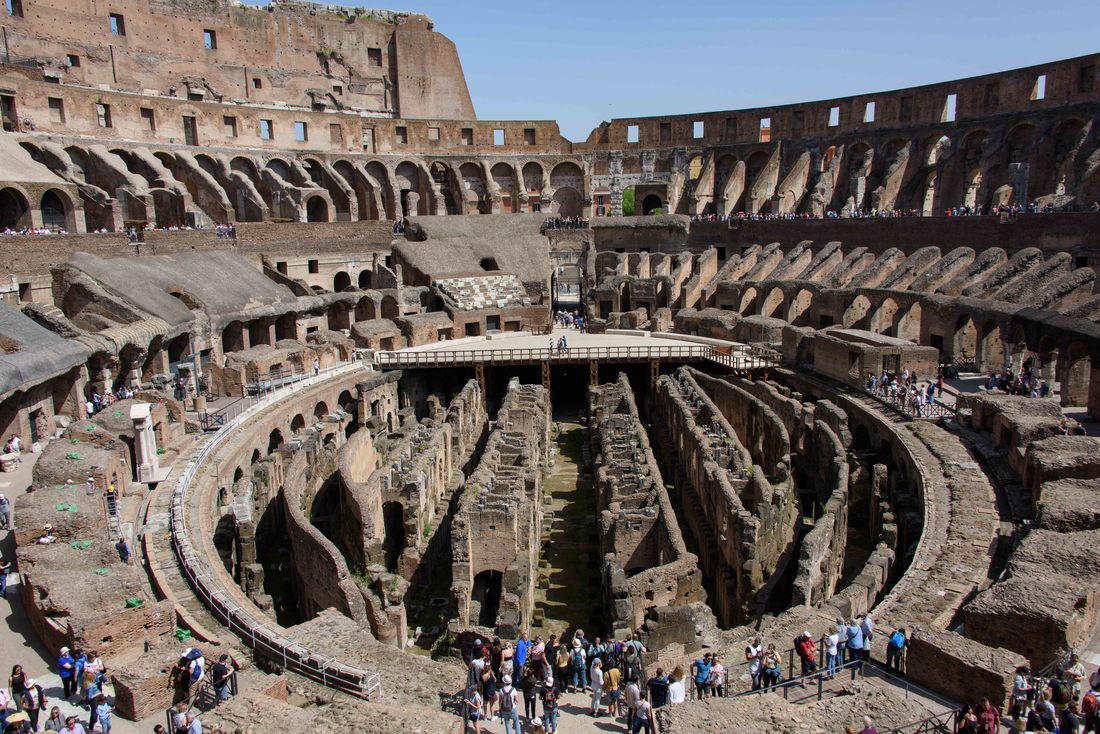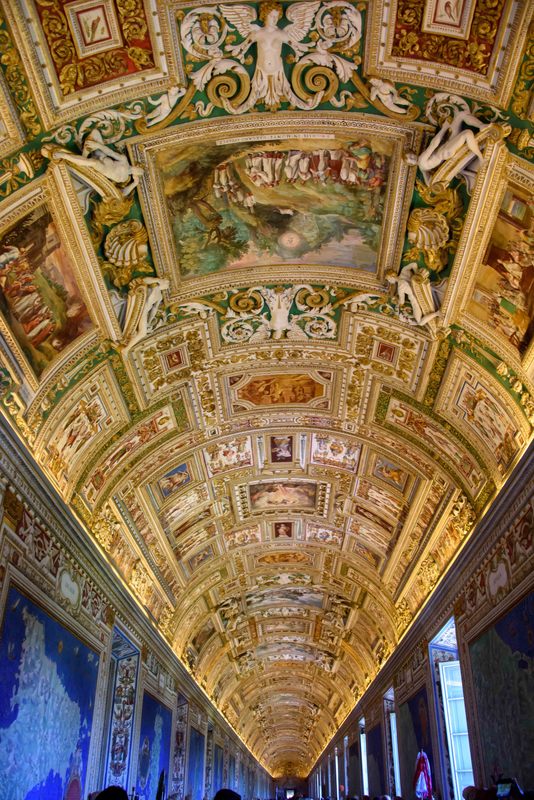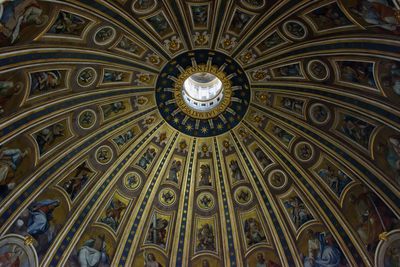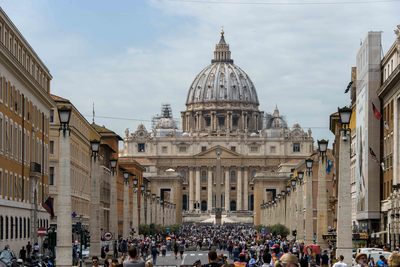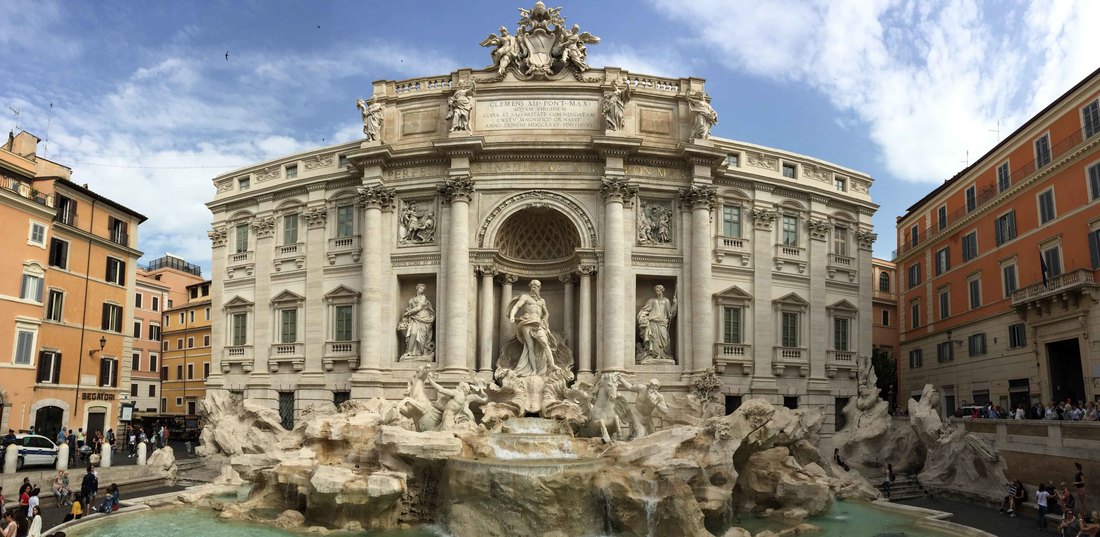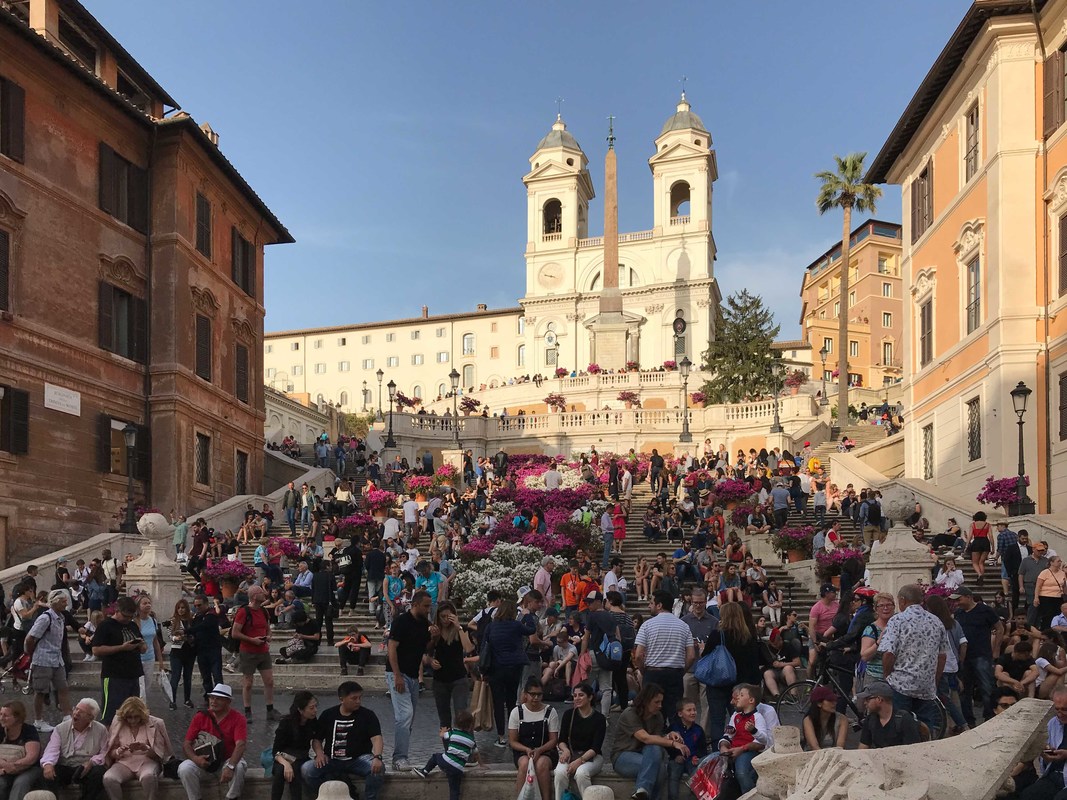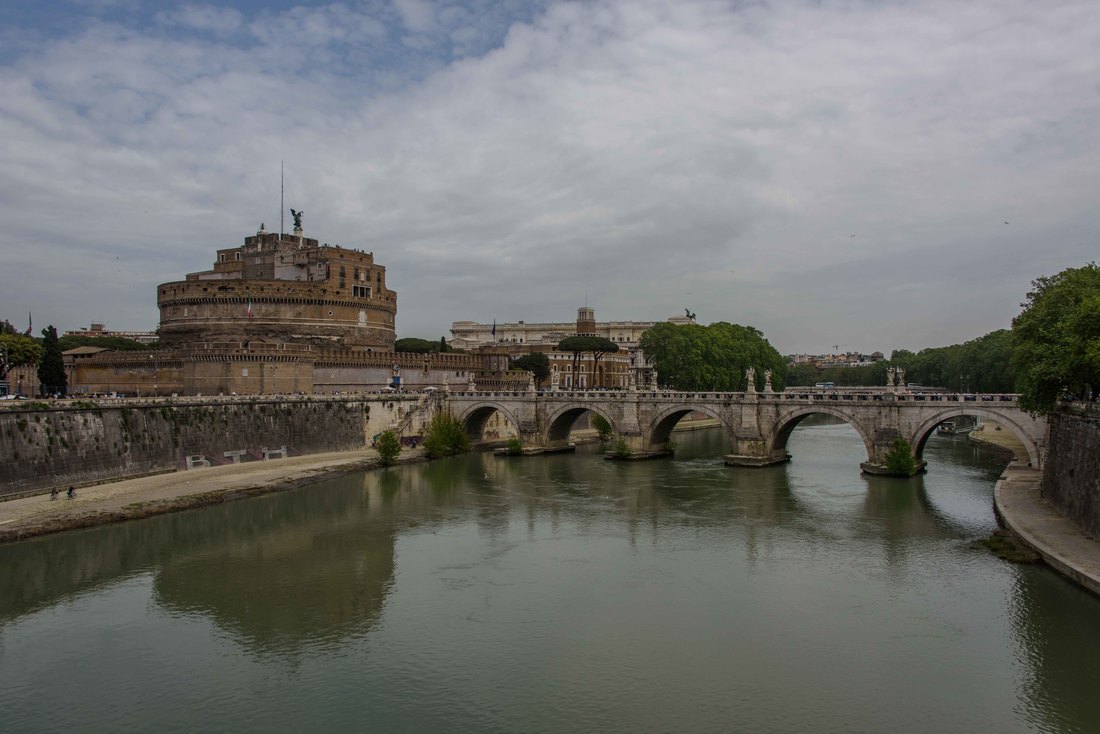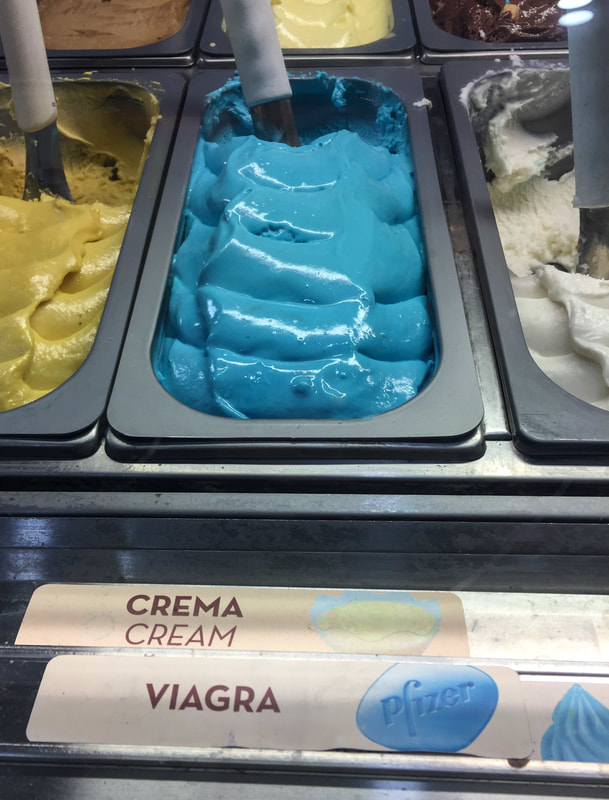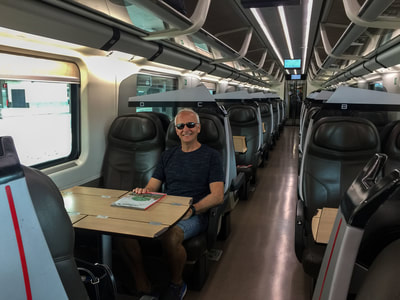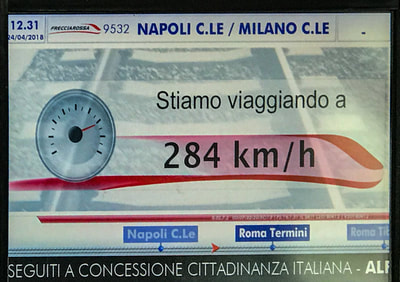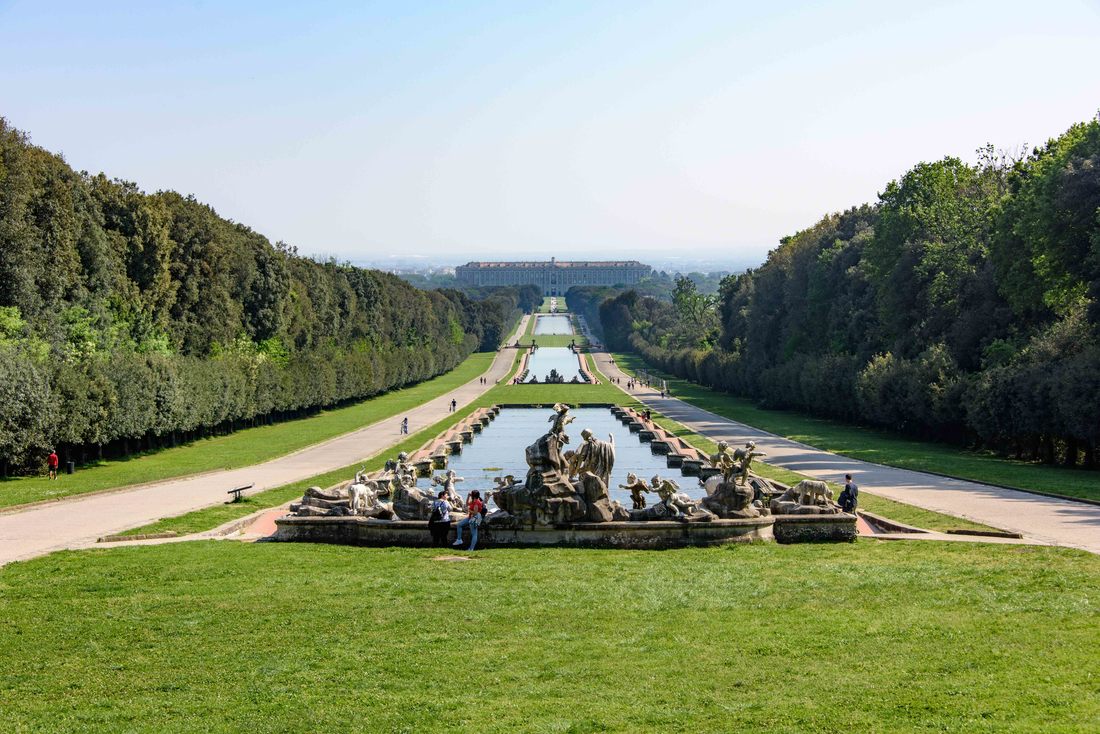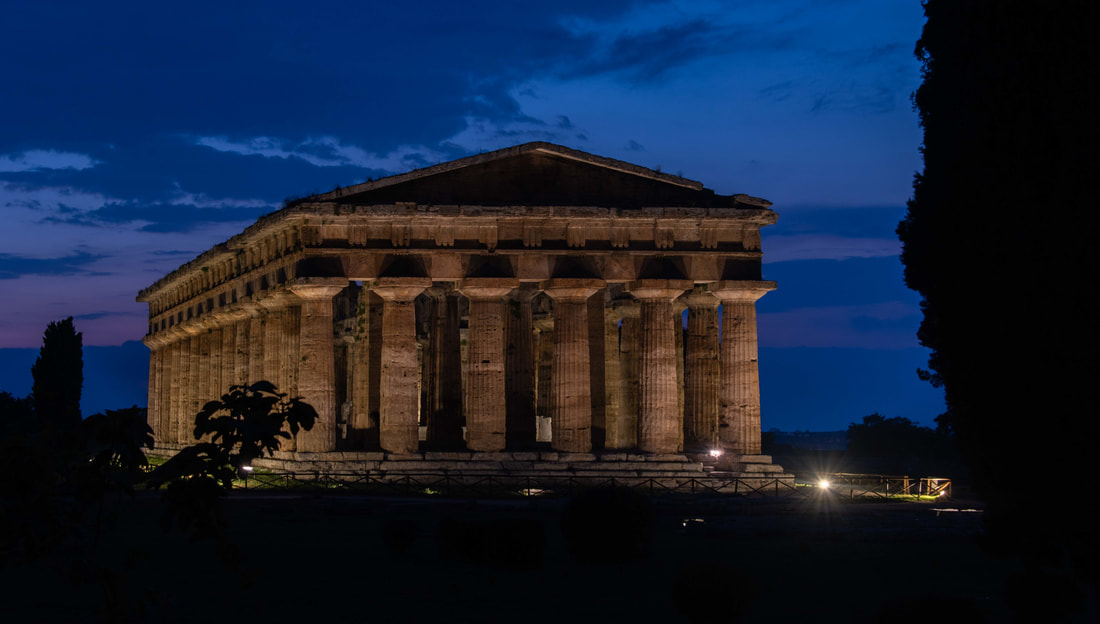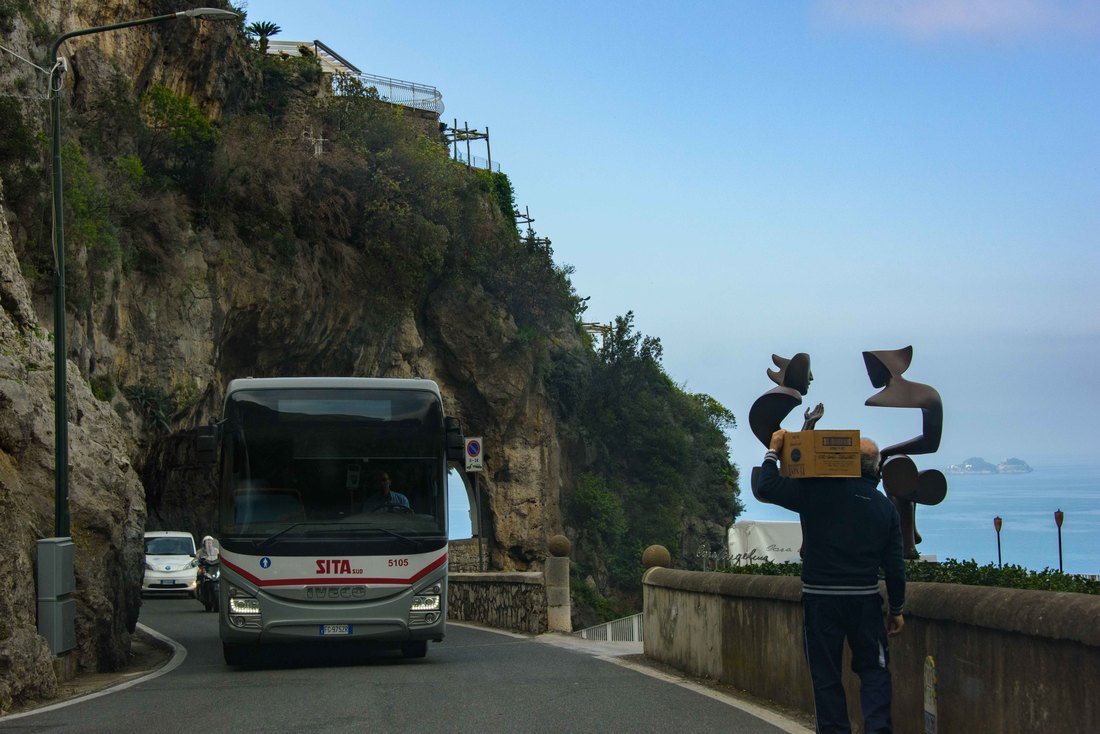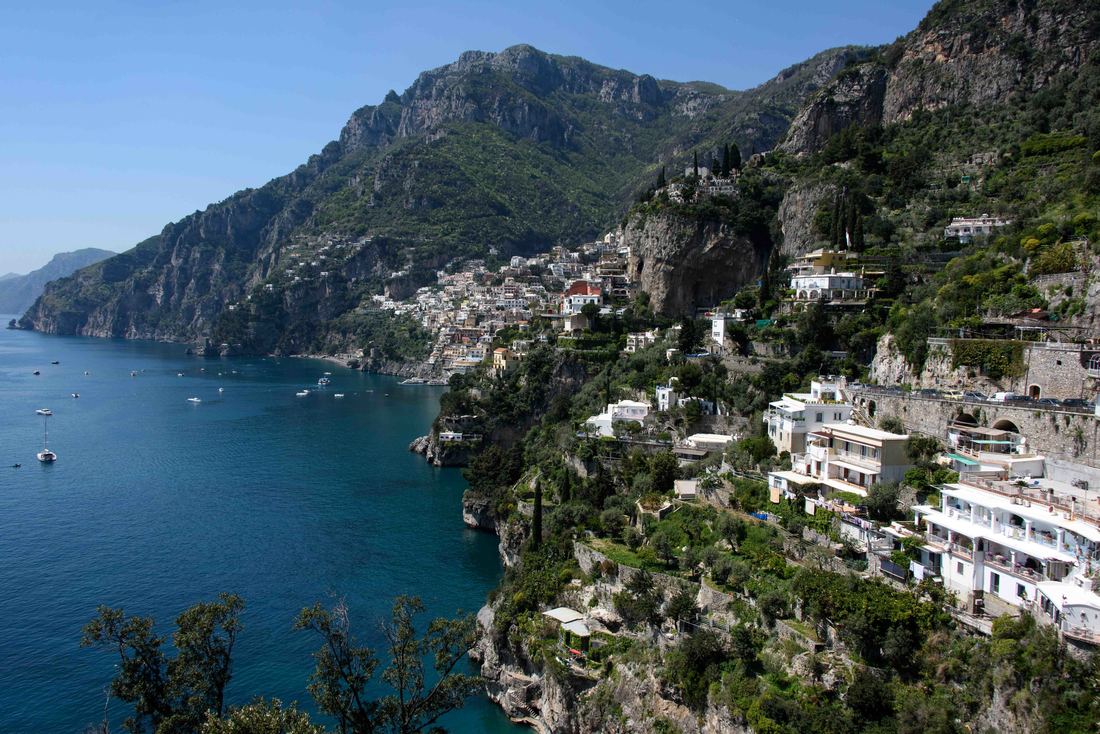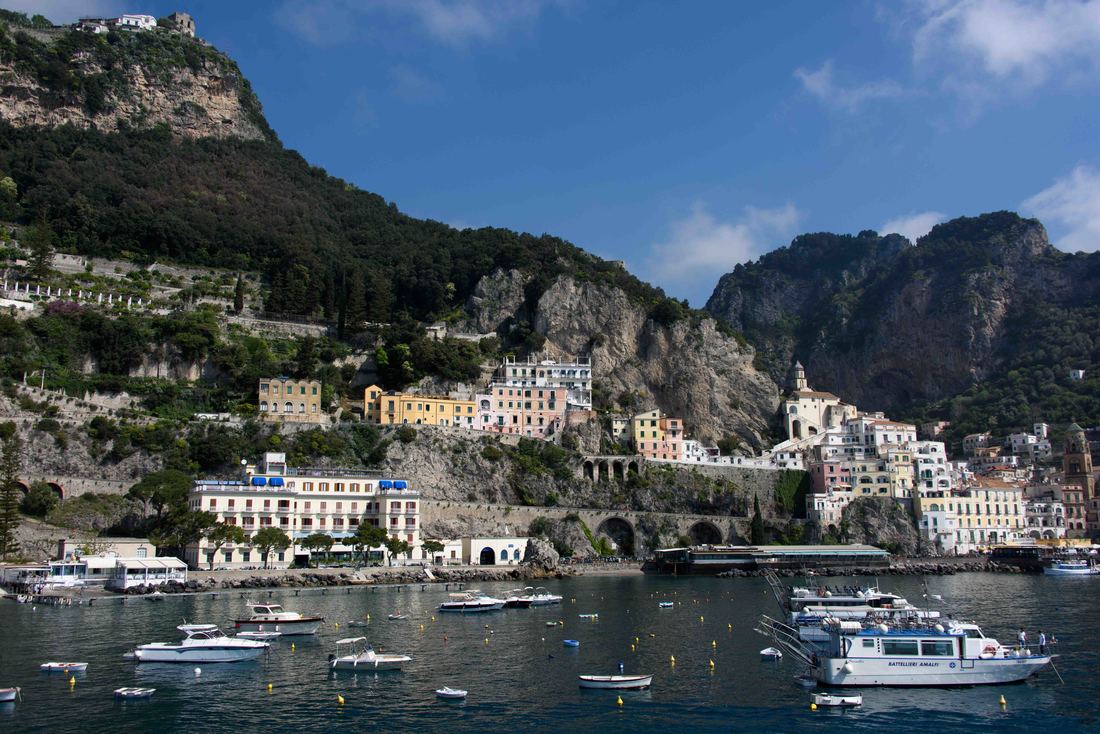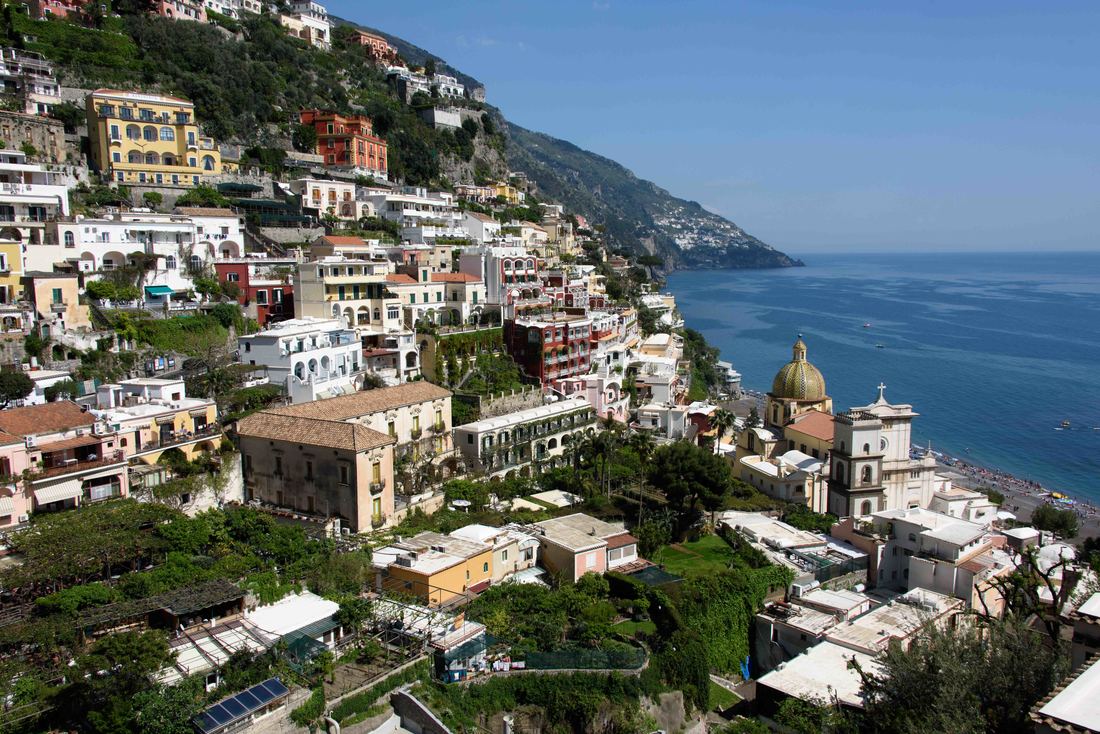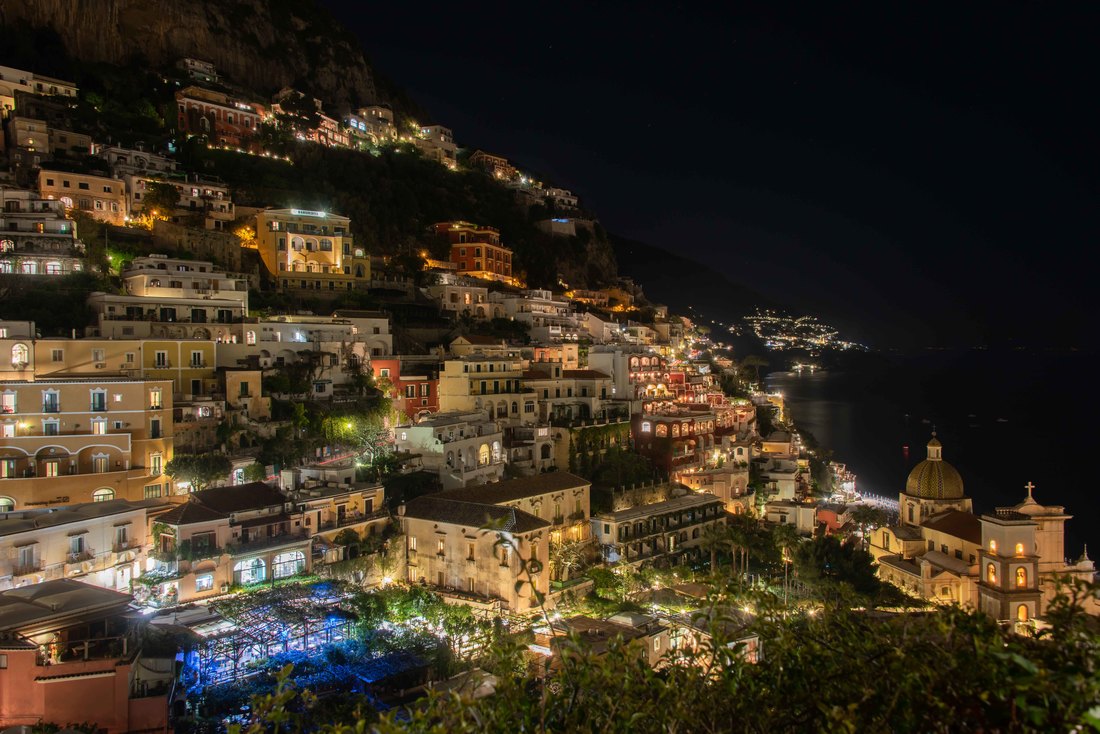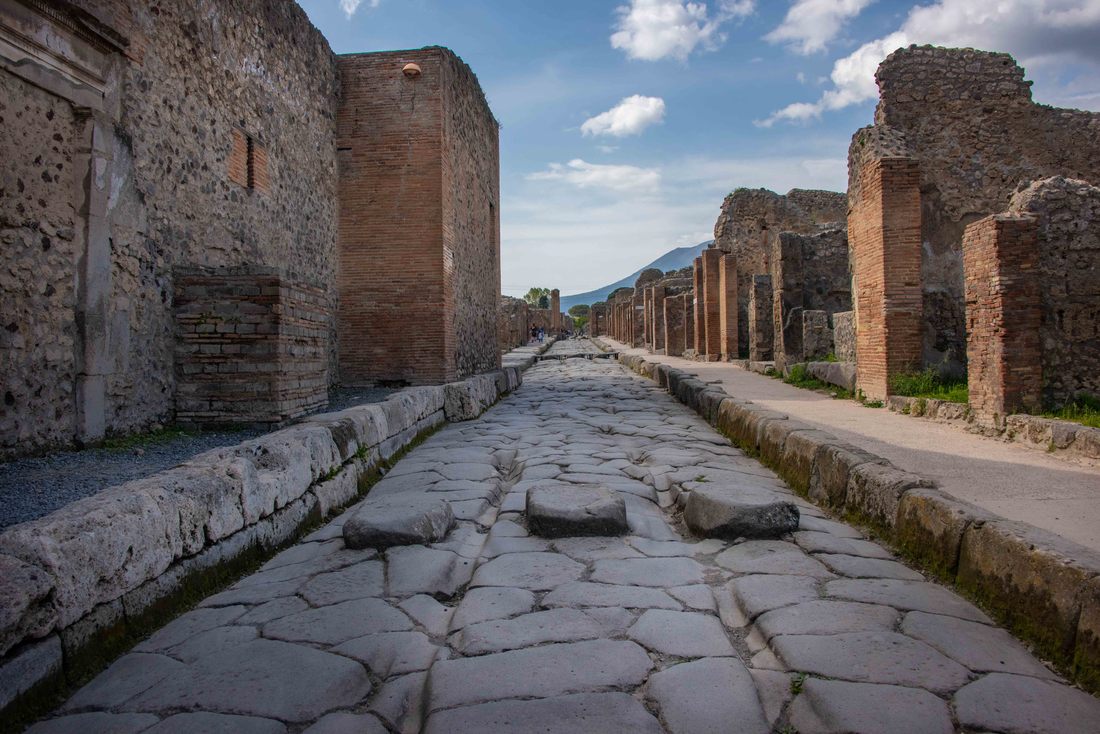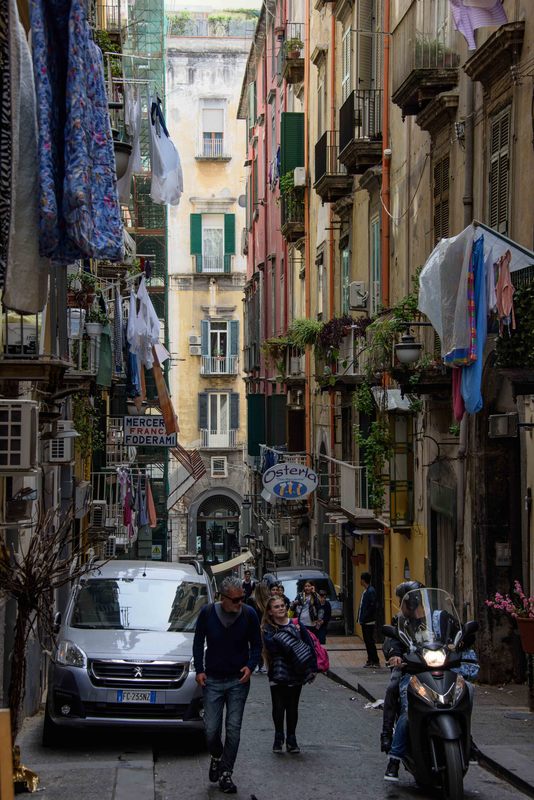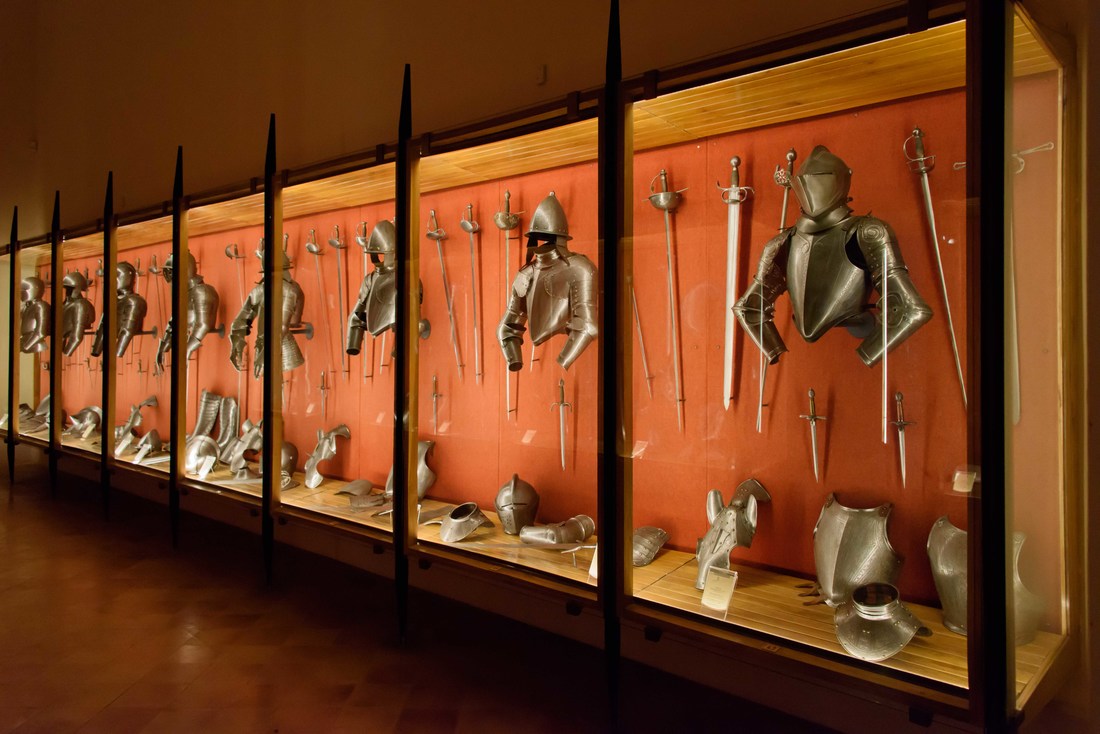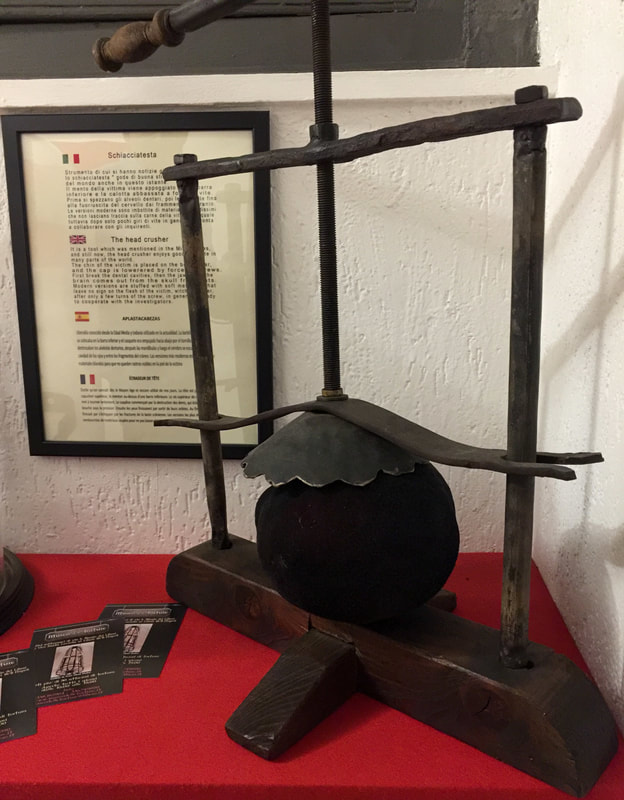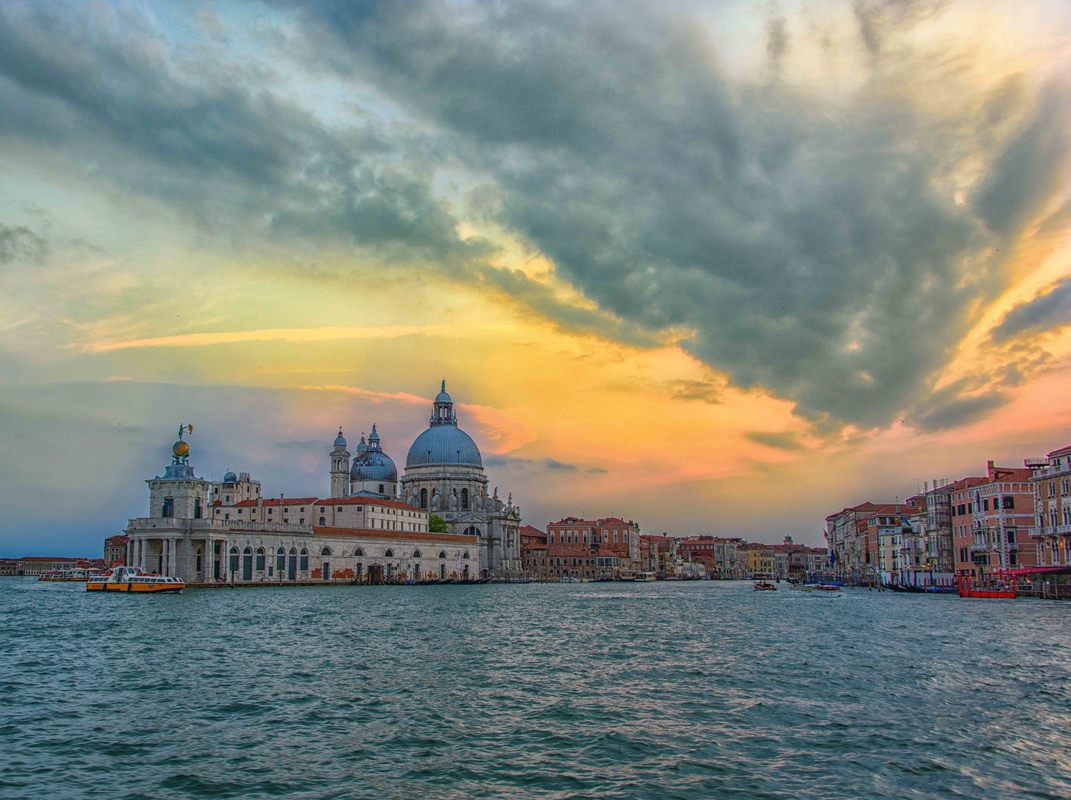
Venice-One of the safest cities in Europe, spans 100+ islands, 177 canals with 417 bridges crossing them, 350 gondolas plying the waterways and according to one source 450+ royal residences. We were enamored and as a result it was an arduous job deciding on which pictures we wanted to remember the city by-the selection is long. (May 11-17)
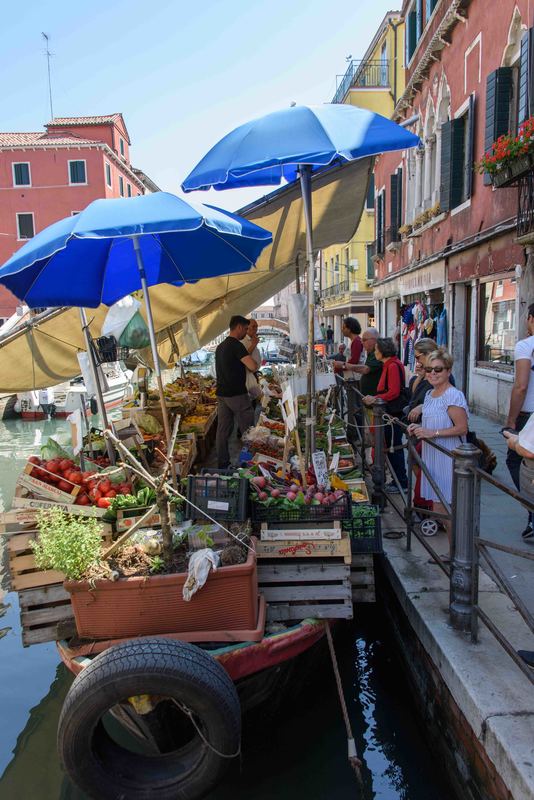
Over a couple of bridges from the apartment was a traditional shopping area. Like many places in Italy the customer doesn’t pick their own produce, the shopkeeper (or boat keeper in this case) selects and bags the purchases. Now if I spoke Italian, I could give him a little guff (like the other ladies) for not choosing the best on offer. Down the way it was the fishmongers cart and deli for the ubiquitous pasta, prosciutto and cheese. Participating in the ritual felt like living a bit more "local".
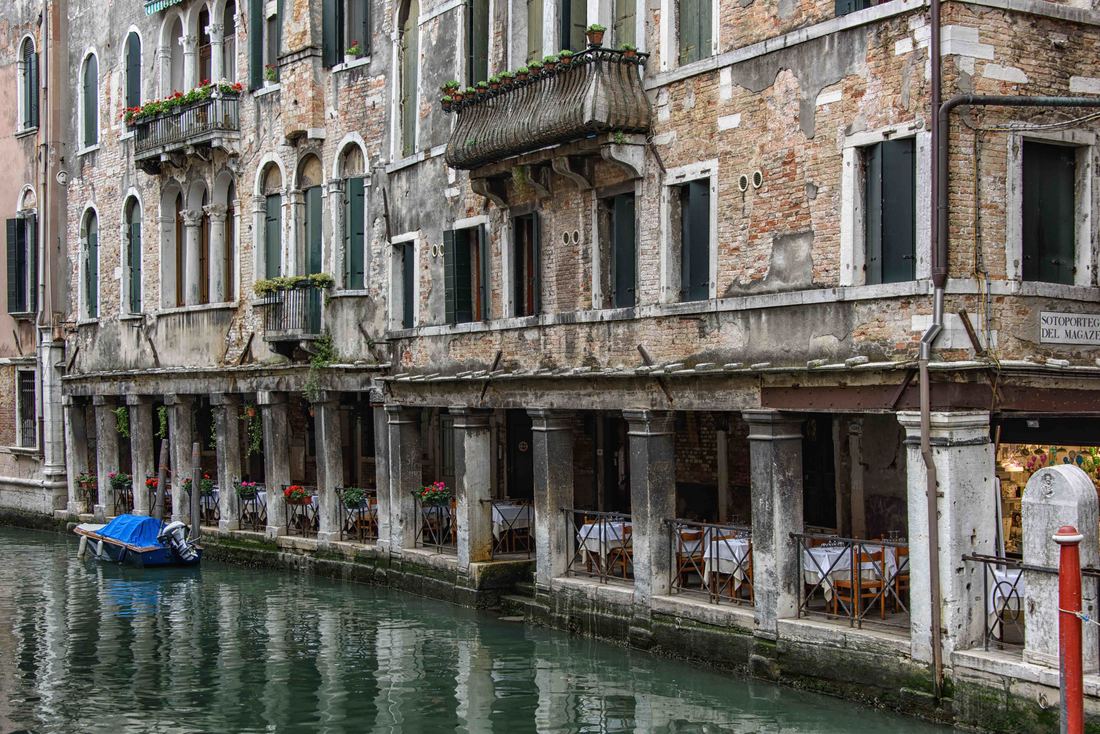
The brick or stone buildings on the islands were constructed on limestone plates perched on closely spaced alder wood piles driven into the water, through layers of sand and mud to finally rest on a hard clay bottom. Centuries later most remain intact because alder is especially water resistant. Although that was good for Venice, vast tracts of land in nearby countries lay barren, stripped of all their alder trees.
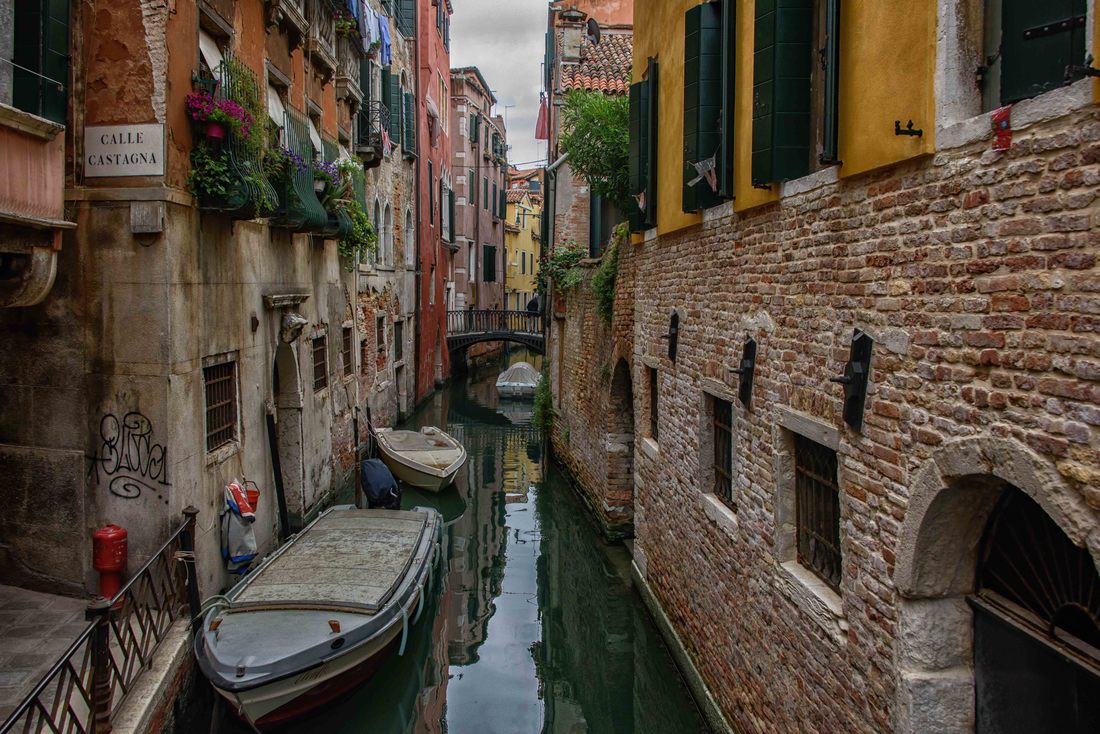
Homes were designed to show their best faces canal-side since all traffic arrived by water prior to the addition of bridges. First floors were often used to unload goods, but as the city sinks between 1-2mm/year many of them have become uninhabitable. To mitigate this slow subsidence (there’s a new word:) there is a floatable gate model being tested this year to block high tides from reaching the inner canal systems.
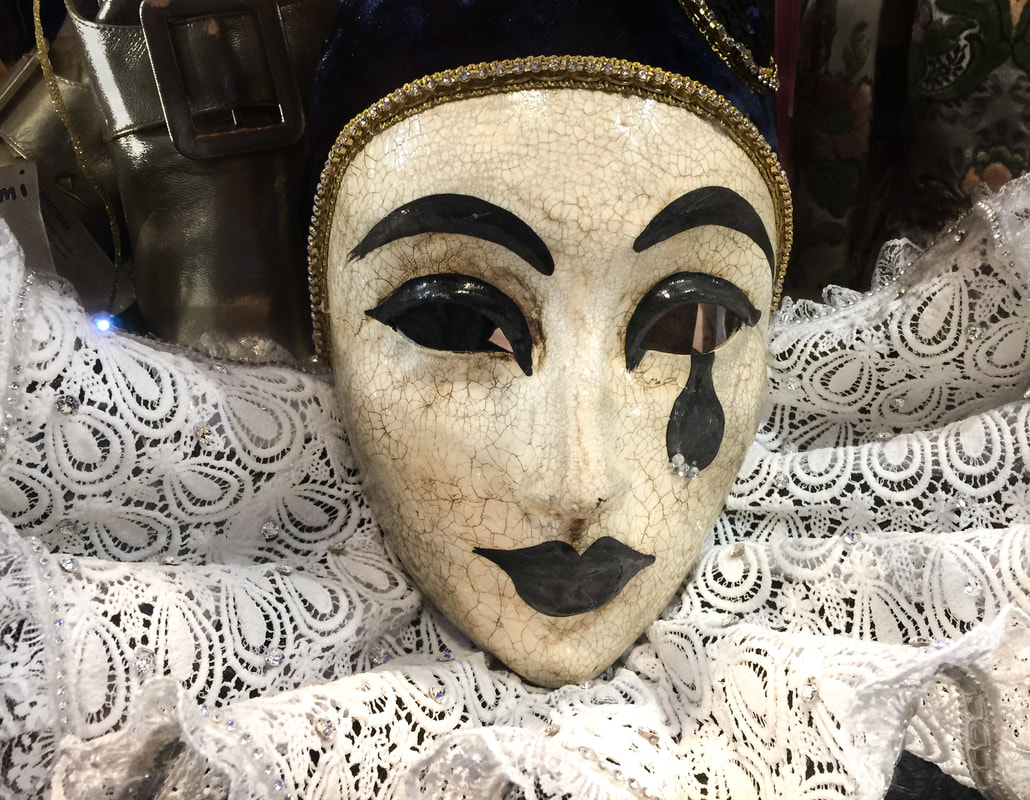
Venetian masks have a long and colourful history: doctors wore a style with a long beak where they added perfume to protect against germs and the stench of death, for others the mask hid their identity allowing them to mingle with social classes outside their own or perhaps engage in nefarious activities. And today they are worn during the annual Carnival when the city bulges to 3 million people.
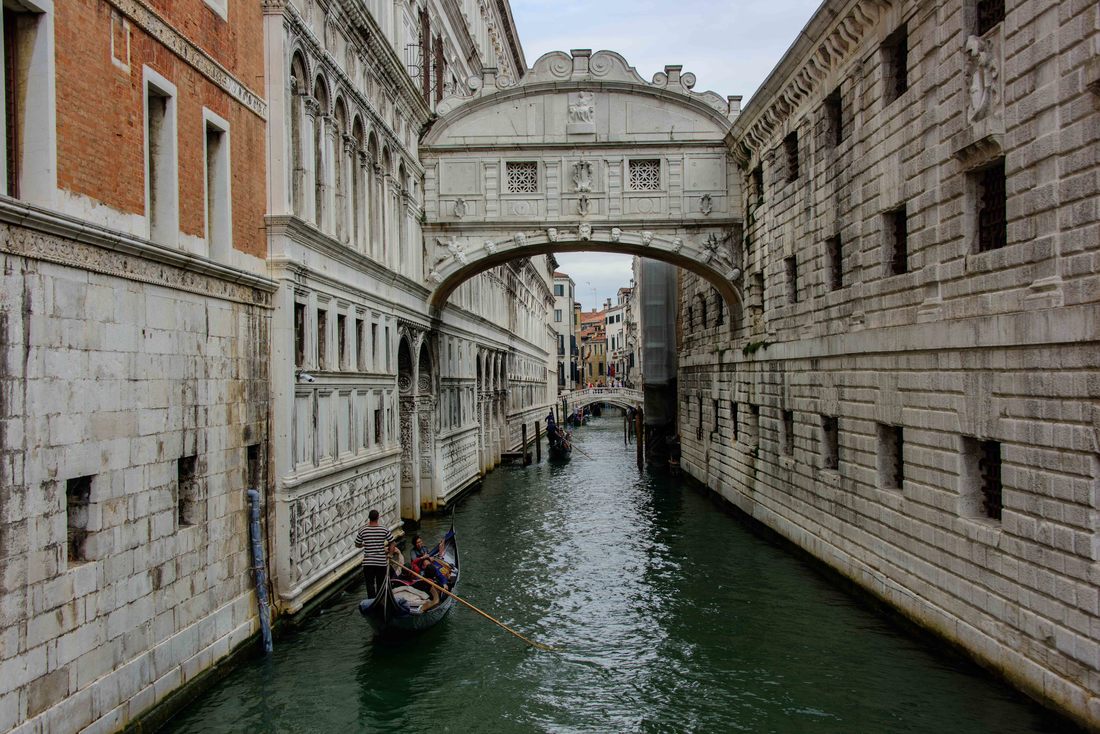
Attached to the Doge’s palace, the prison was made up of dank, windowless cells. It’s said that the only time a prisoner would see outside was when they crossed the bridge connecting the prison to their place of execution. As they looked out the small windows of the covered bridge they sighed at the beauty of their view, hence the name Bridge of Sighs.
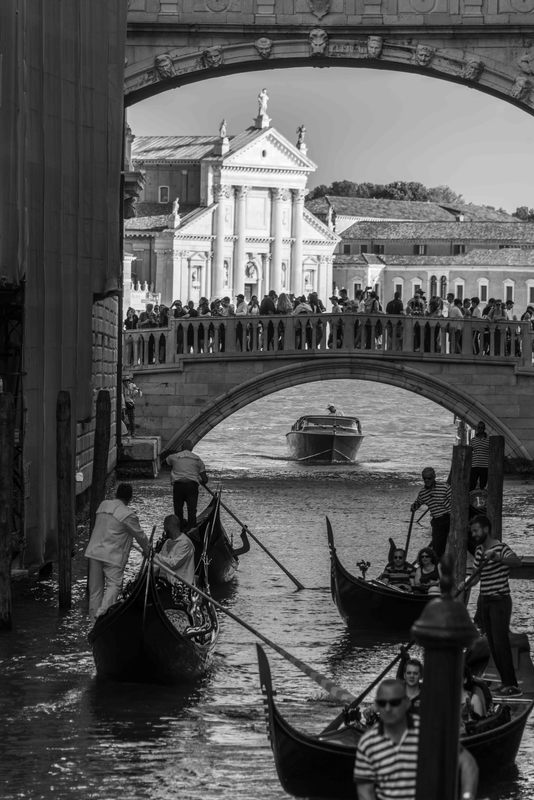
Passing under the Bridge of Sighs was part of a popular gondola route. Maneuvering between ferries, taxis, tour boats, each other and what appeared to be a complete absence of rules of the road, the waterways were thick with gondoliers. Listening to the occasional one serenade their riders was a special treat.
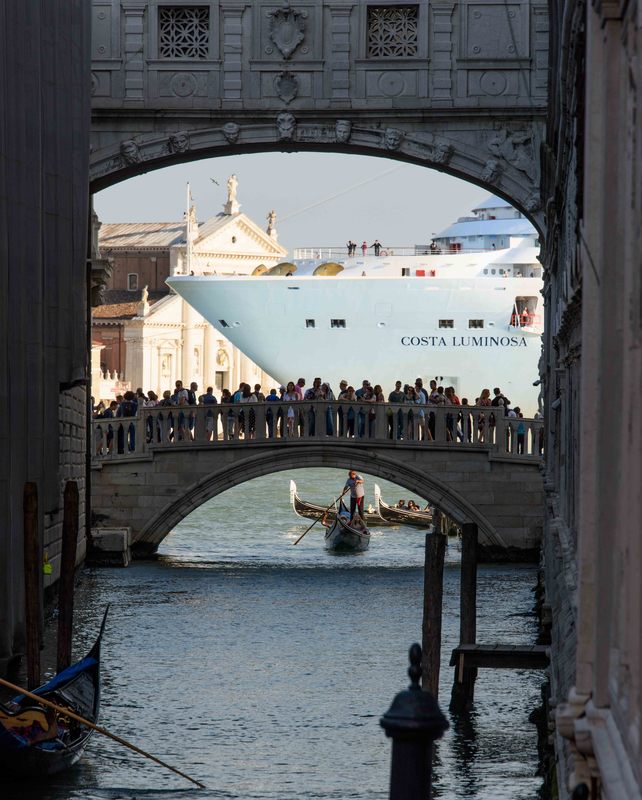
Today Venice is facing some major challenges including financial woes, erosion, excessive tourism, pollution and problems caused by oversized cruise ships sailing close to the banks of the historical city. And as if that isn’t enough there is the small matter of it slowly sinking. The sight of this monstrosity appearing in our view was a little startling-like a wall floated past completely changing the seascape of the Grand Canal.
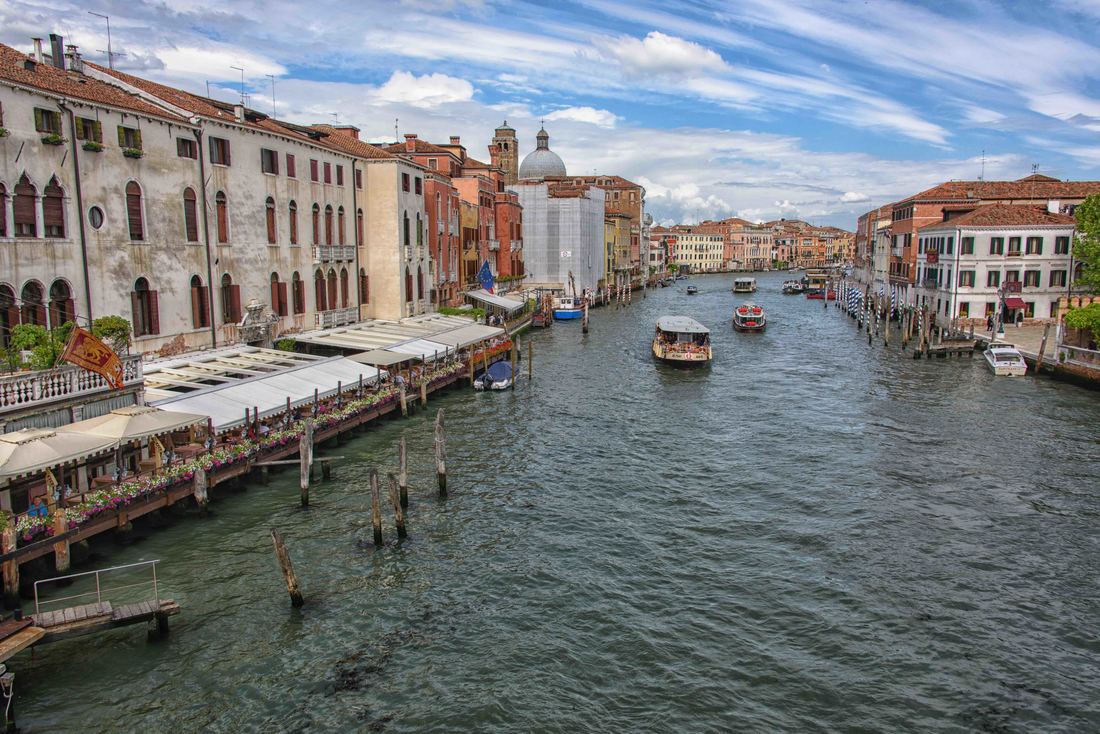
To continue with this doomsday theme...for every one of the 50,000 residents of the historic center there is at least one tourist to match them. Of those, only half stay overnight to fully contribute to the economy while the remainder eat their breakfast and dinner on a cruise ship and arguably spend very little while on land. Last year UNESCO was considering adding Venice to its "In-Danger" list due to the effects this 'overtourism' is having on the canal system. Considering the cost/benefit of all these day trippers there is talk of limiting cruise ships.
A well sits in every campo (mini square). Now covered, the cisterns were once the fresh water source for those in each small neighborhood who could not afford to have one in their own home. They were dug a few feet deep, layered with sand to act as a filter and water was collected each rainfall as it poured into stone gratings that channeled into the well. Although the campi are now paved in brick or stone, they used to be communal agricultural areas supplying the necessary produce. The grass around the well above is the only sign we saw of their former use.
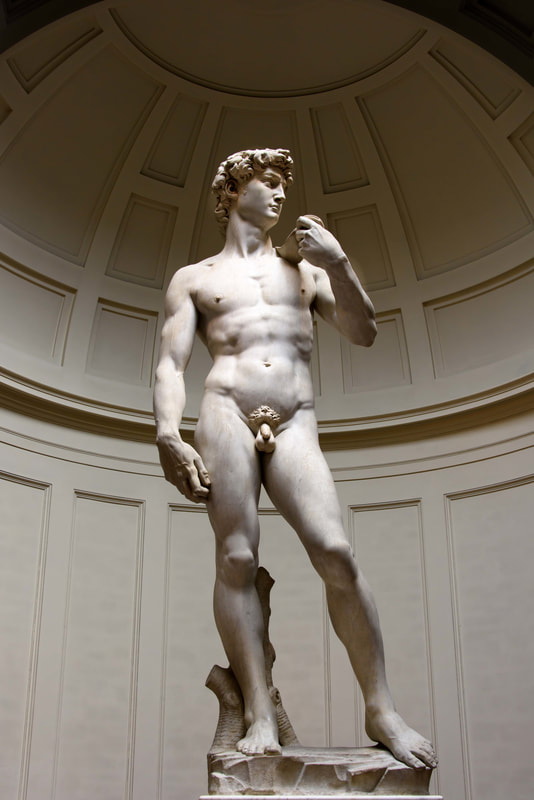
As the birthplace of the Renaissance, seeing Florence and its works of art was the impetus for visiting Italy. And Michelangelo’s statue of David was at the top of the list. Sitting on one of the surrounding benches and spending time admiring the scale and perfection of the piece makes you misty eyed. The thought is that Michelangelo’s statue of David shows him before he has defeated Goliath. The underdog David holds the sling in his left hand and in his right, the rock that he slung at Goliath (landing the fatal blow squarely in the giant’s forehead). Fun fact: David stands 17’ tall. (Florence, May 6-10)
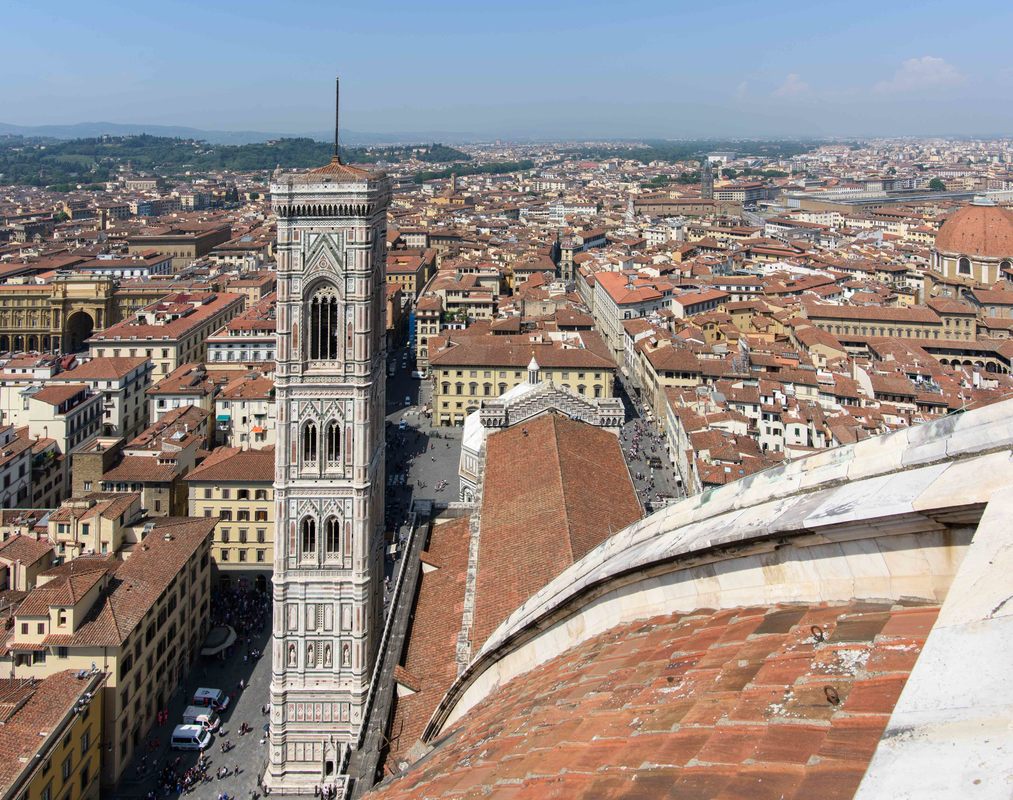
The monolithic Florence Cathedral complex completely dominated the Piazza del Duomo. Among other buildings, it contained the Bell Tower and the dome topped Florence Cathedral (the dome being such an impressive engineering marvel, for the 1400s, that it is graced with its architect’s name-Cupola del Brunelleschi).
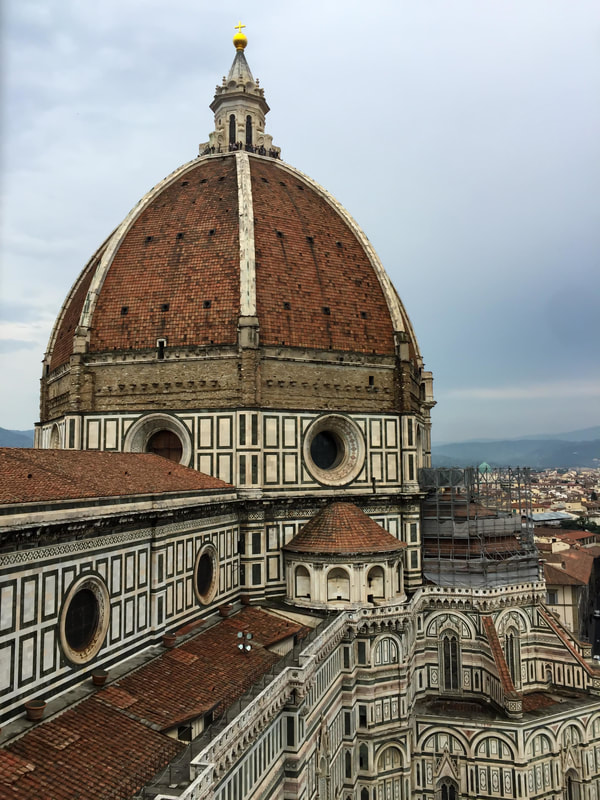
How to erect the Cupola del Brunelleschi without the use of temporary supports puzzled the leading architects & engineers of the day. The ahah moment came when of them one cracked off the small end of an egg, turned it upside down, and noted how even with its odd shape it supported itself. Climbing the 463-step corkscrew staircase to get to the top of the dome allowed us to appreciate the magnitude of their challenge even more (and made us a little dizzy). The ant-sized people at the top of the dome provide some scale to its size.
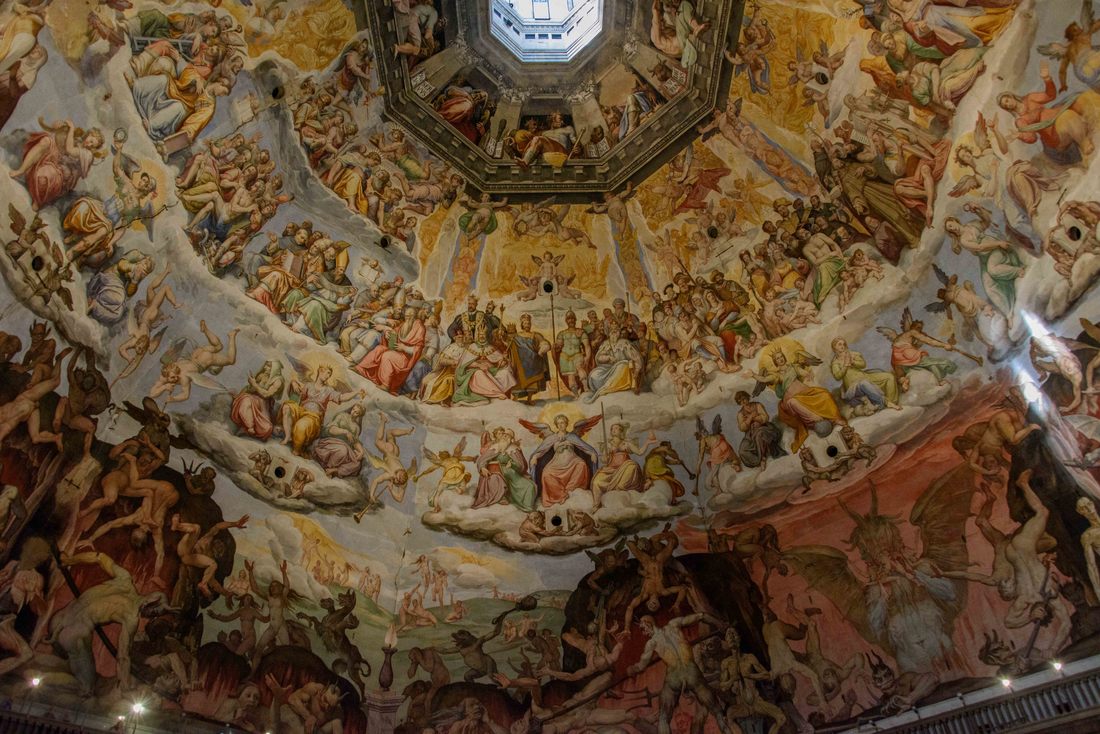
Inside the cupola, paintings played out scenes from The Last Judgement, from the highest echelons of the church along the top row to the lowest row detailing the seven deadly sins of pride, greed, lust, envy, gluttony, wrath and sloth. It would take a more nuanced eye than ours to figure out which of the sins was being illustrated in the shot above, but either way the imagery is macabre at best. Fun fact: the cupola covers 3,600m².
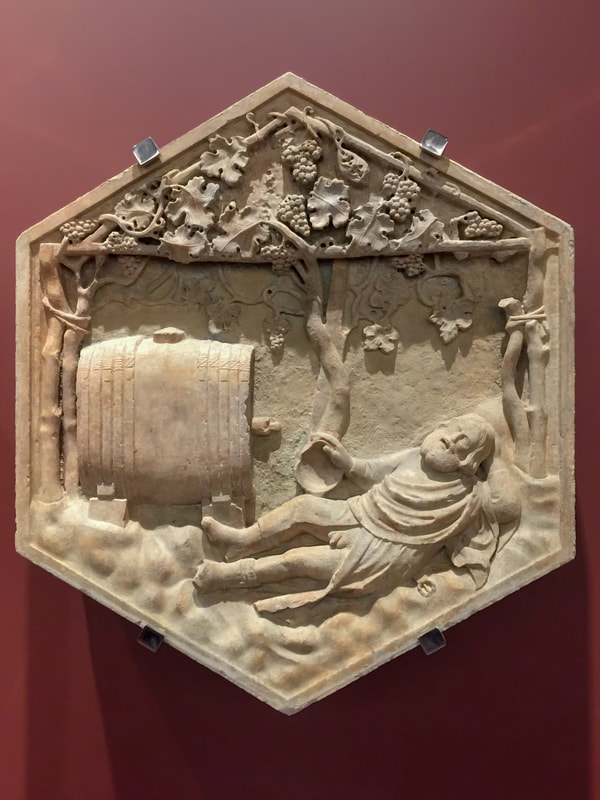
Some pieces of art that once adorned the interior and exterior of the Florence Cathedral complex are now stored in the Dome Museum. Several reliefs depicted the work and learning valued by the society. Of course, wine making in Italy was an important contribution, but what's with the staff in quality control.
The parking skills of the motorcyclists outperformed those of the car drivers. We saw drivers double park and go in to a restaurant for a meal where only the eventual shouts from the sandwiched in driver would alert the culprit that it was time to move.
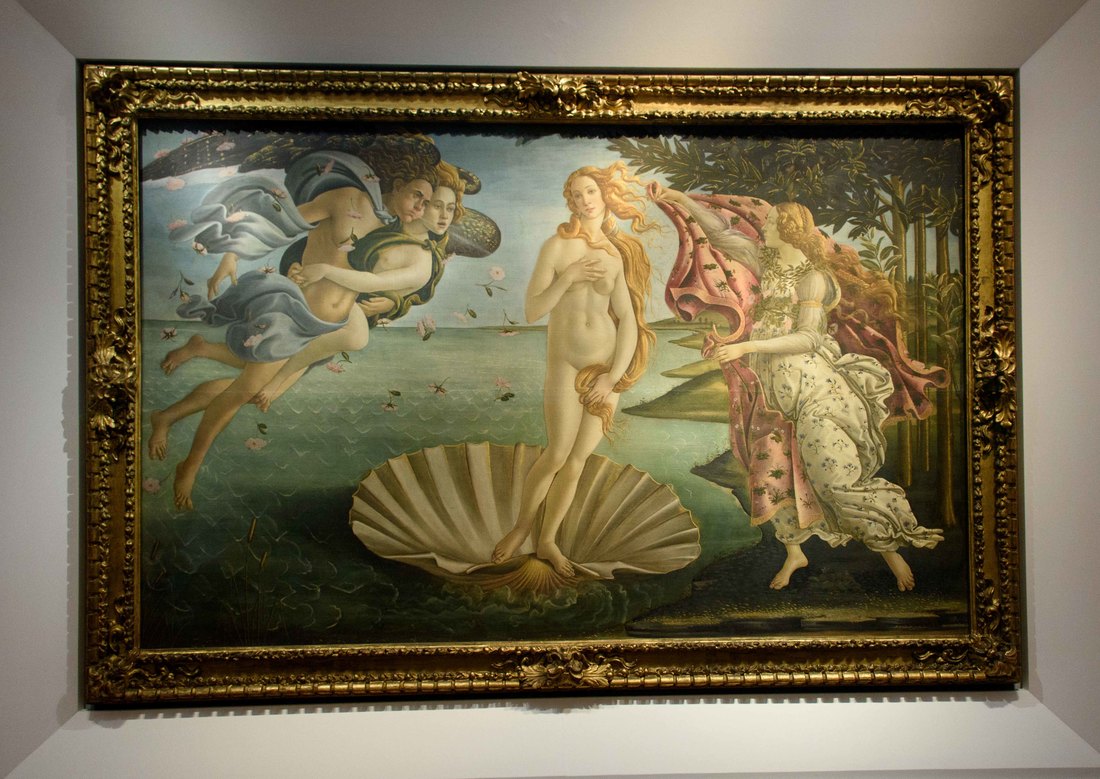
On condition that it never leave Florence “the world's greatest collection of Italian Renaissance art”, was bequeathed to the city by the Medici family and housed in the Uffizi Museum. That seems rather fitting as the wealthy patrons supported at times the likes of Leonardo di Vinci, Botticelli and Michelangelo with the latter living with the family for 5 years. Above: Sandro Botticelli is noted for painting beautiful subjects and The Birth of Venus is one of his most famous pieces.

The town hall of the city, called the Old Palace, has been the central point of government for centuries. While we were there a trio of high school students approached us offering a tour of the site. We ended up learning equally about their school system. Offering the tour was part of their ongoing school program to practice English and their knowledge of history. Students spend a total of 5 years in secondary school-the first 2 years for general studies and then at approximately 13 years old they decide what they want to do with the rest of their lives. Upon transferring to the appropriate school, they focus on their area of interest: Classics (history, languages, philosophy, etc.), Sciences (physics, chemistry, etc.), Fine Arts (drawing, sculpting, painting) and finally Technical (specific vocations).
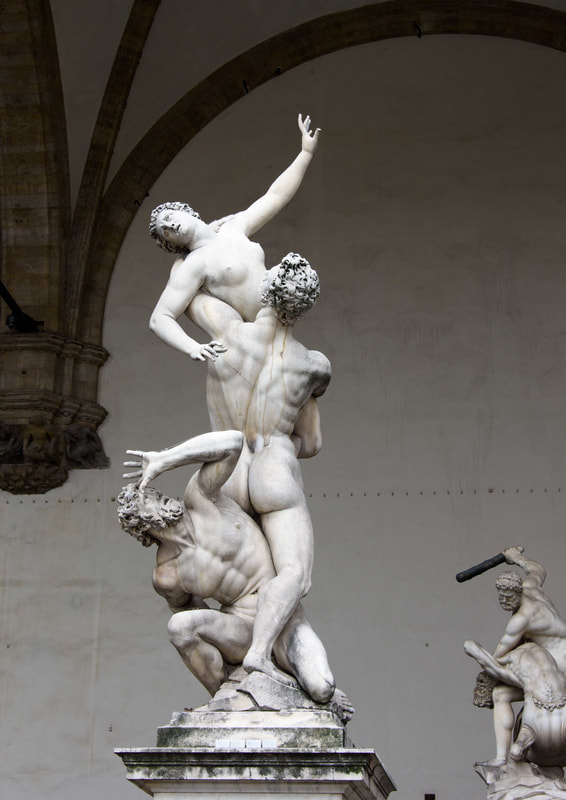
Next door to the Old Palace was the forum Loggia dei Lanzi where centuries ago leaders addressed the citizens of Florence. As befitting a place of civic pride, the leaders were surrounded by statues of familiar scenes from Greek and Roman mythology. The Florentines added their own twist so that the familiar myths became allegories honoring their city’s struggles with other parts of Italy. Violence reigned whether it be severing of heads, arrows through the heart, rape, abduction or clubbing.
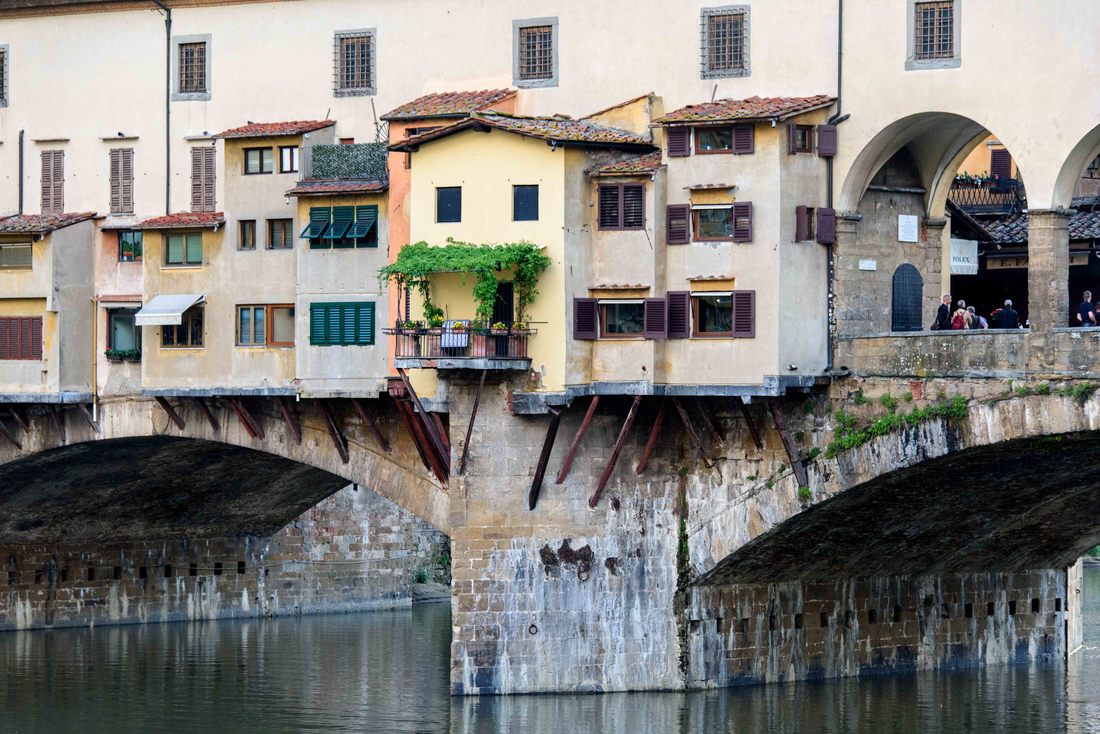
As in times gone by, shops cling to the sides of the Ponte Vecchio (Old Bridge) garnering them the ideal location for pedestrian traffic. But what used to be butcheries has been replaced with gleaming jewelry shops so small that surely a handful of people inside them would cause the timber supports to creak.
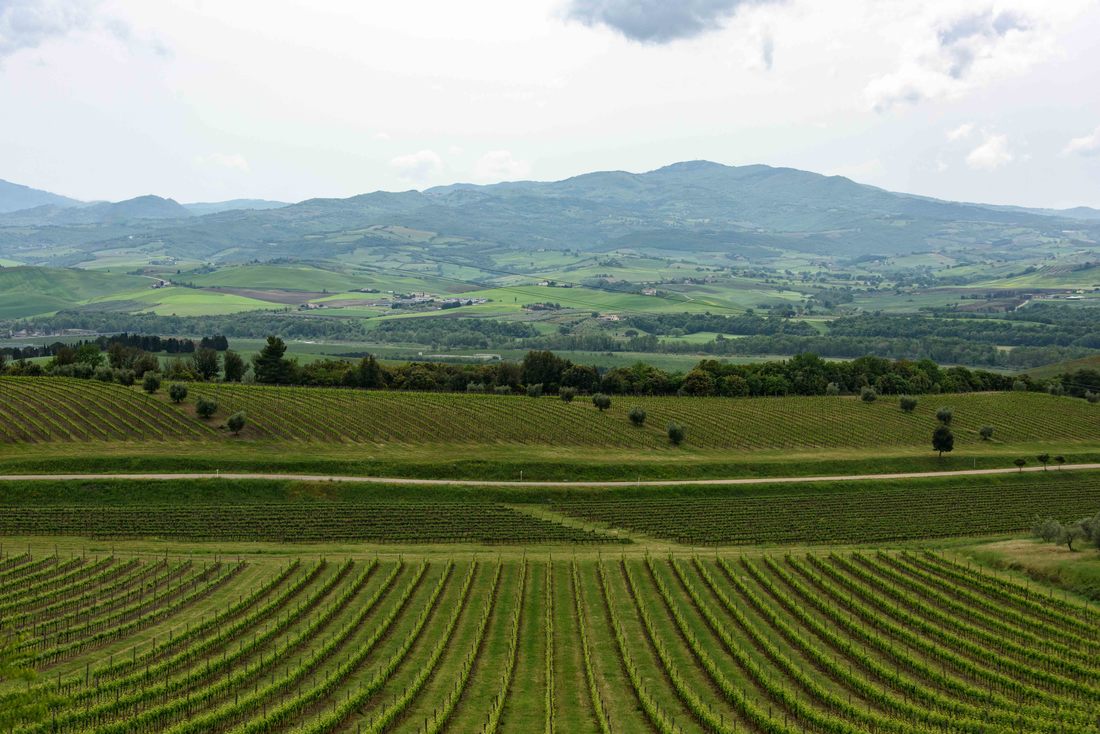
The vineyards are also popular with wild boars who are fond of eating the grapes. Perhaps that is what gives their meat such flavor - wild boar stews and pasta sauces are a Tuscan specialty. The animals are so abundant in the area that there has been talk of a culling in addition to the annual hunting season.
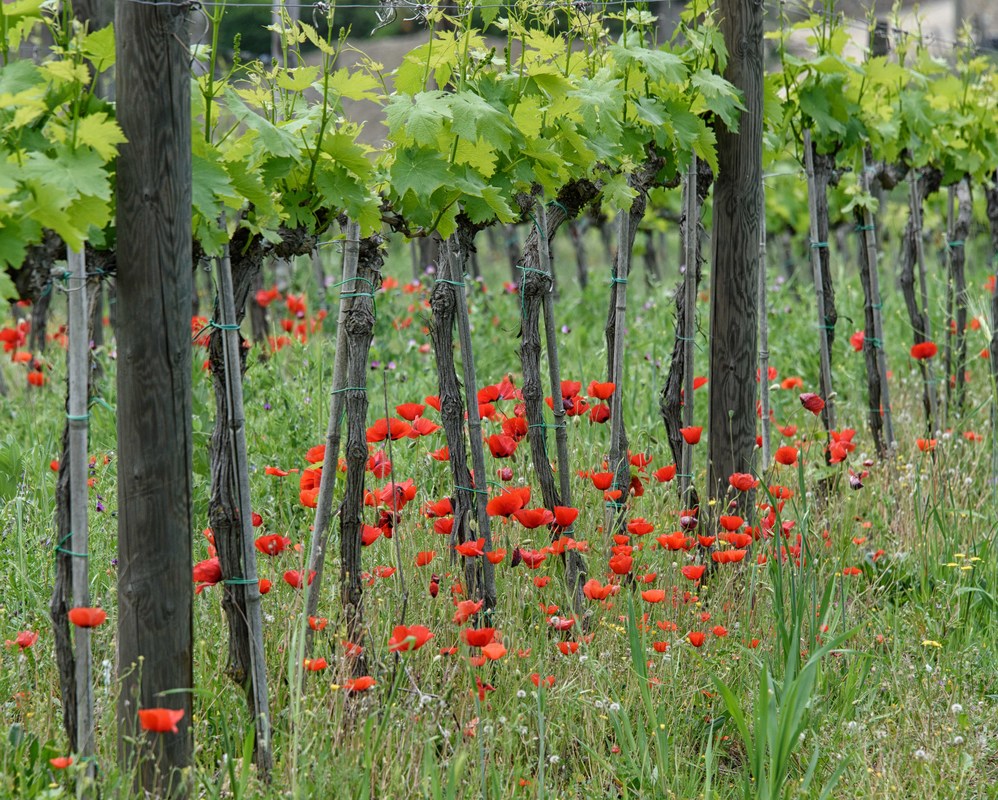
Remembrance Day, with its emblematic poppy, has always been a revered day. But because the delicate flower isn’t common at home, its significance was more intellectual than visceral. After seeing them grow wild for weeks now, it’s easy to connect them with Flanders fields and associate their deep red with the blood that was shed by so many for our freedom.
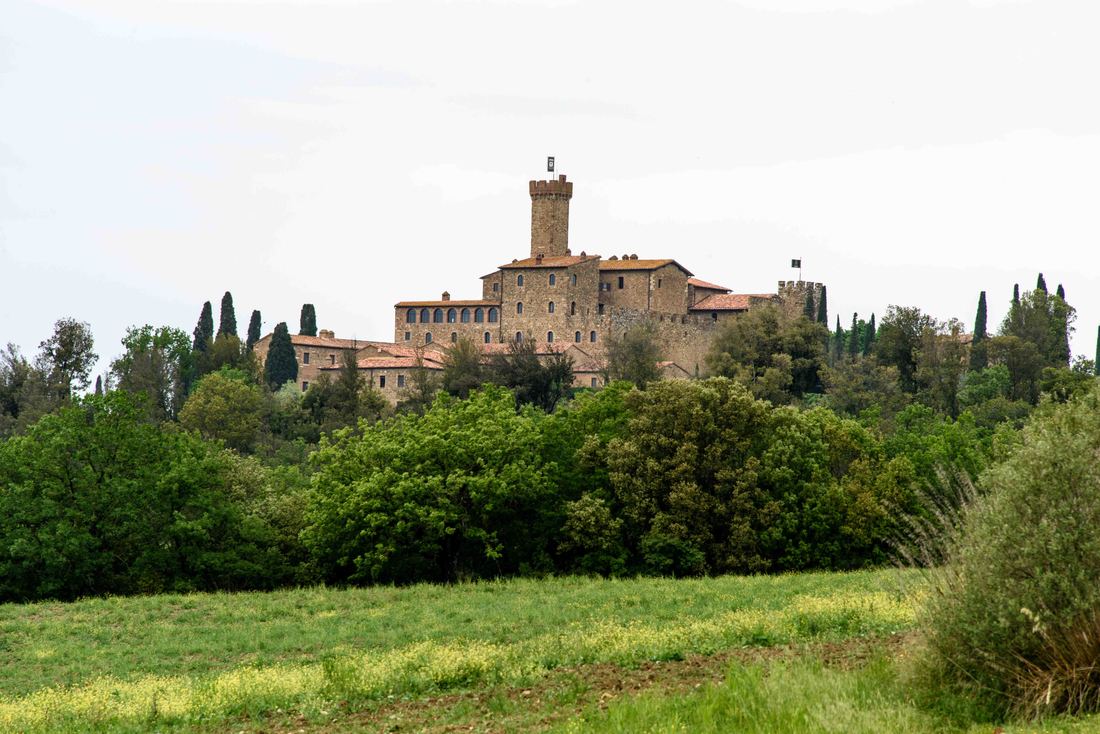
The charms and fertile lands of Tuscany have a long history with medieval castles or fortified small towns perched on many a hilltop. Although they changed hands several times over the centuries they continue to be lived in by owners (or rented out to tourists) while its common now for castles in other parts of Europe to languish vacant. (Banfi Castle)
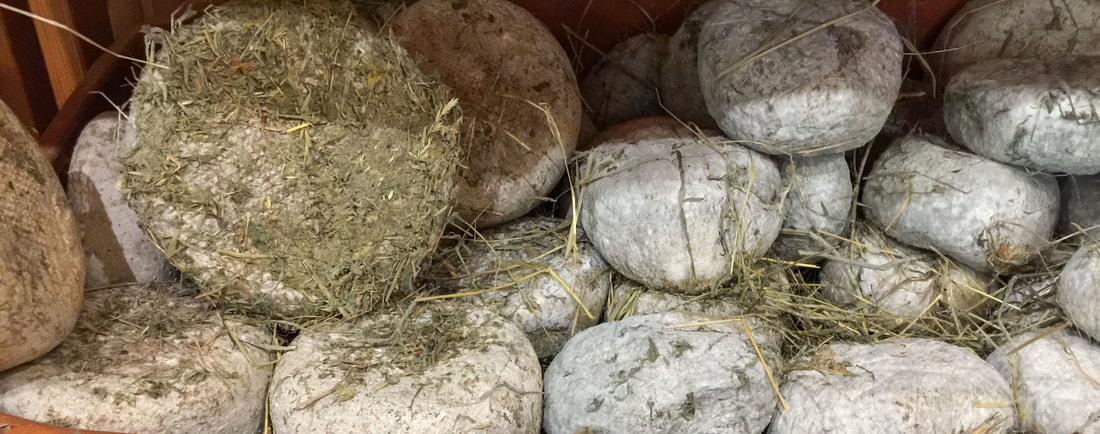
Predating the town of Pienza was the area’s sheep's milk cheese (pecorino) production. The sheep that eat wild herbs produce a strong milk for the cheese, while the grain eaters are responsible for the milder variety. Not sure what the above would taste like but being aged under hay (and it seems whatever was stuck to it) could only be an acquired taste.
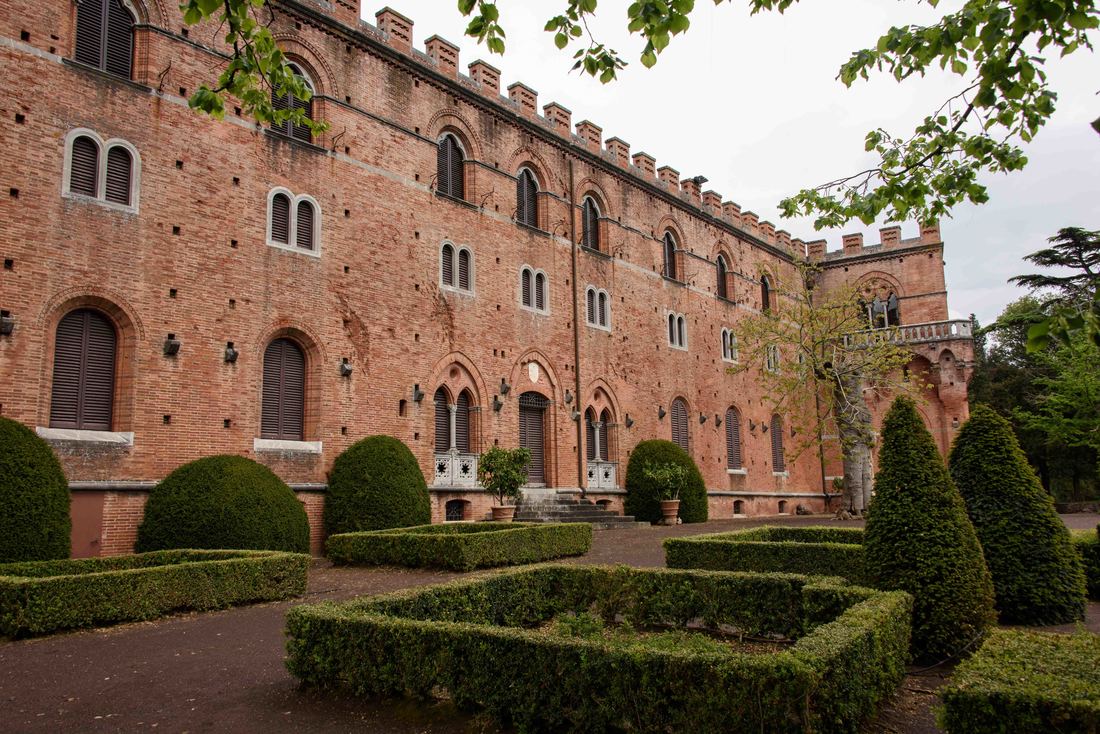
For centuries Florence, allied with the papacy, and Siena, with ties to Germany, fought over the 75km of Tuscan land between them. And this castle, strategically situated mid-point and exceptionally heavily fortified was a magnet for both sides. After ping-ponging back and forth between the rivals for centuries, finally in the mid-1800s all settled down and the founding Ricasoli family continues to live here and produce its wines in this, the oldest winery in Italy. (Brolio Castle)
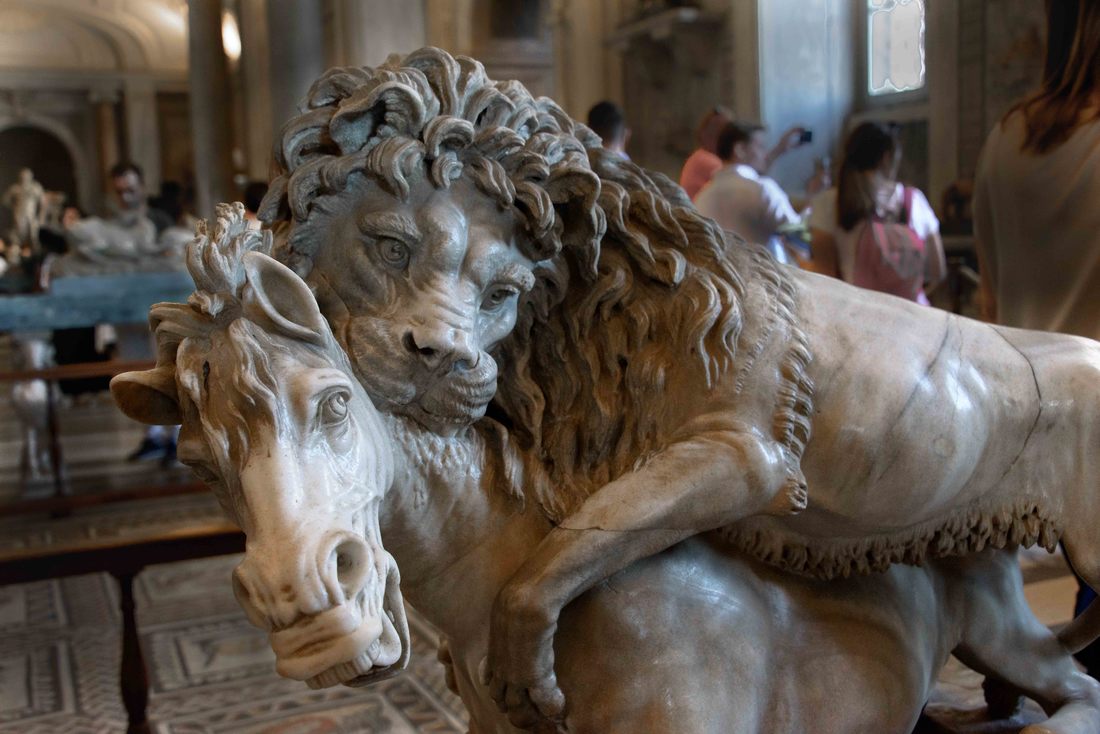
With an audience of up to 80,000, collosium shows lasted the full day: first there was the wild game hunt replete with jungle foliage to create a realistic setting. Lunch was enjoyed while watching half-starved beasts, tied together, fight to the end. Never a fair match, the cobbling made it easier for the predator to devour the prey. Wrapping up the days entertainment, the gladiators entered the arena. Because they were an expensive commodity a fight to the death was not always a given. Fun fact: if there had been any gladiator blood shed, it would be sponged up and sold as a remedy for epilepsy. Once again, I am thankful for modern medicine.
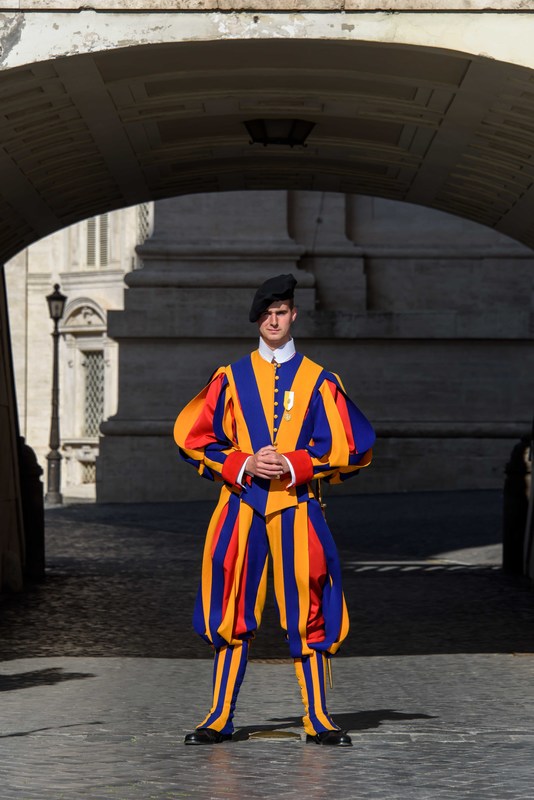
Pontifical Swiss Guard at one of the entrances to the walled Vatican City. Fun facts: you can apply for the job if you are a Swiss citizen, single, 5'8" or taller, 19-30 yrs old, have a high school or above education and of course are Roman Catholic. Only when they are standing with their hands clasped are you allowed to ask them questions.
Rick rose with the sun to avoid the crowds so that he could see inside St. Peter’s Basilica and climb the 551 steps up to its cupola. If he’d arrived any later, the lineup would have been hours long.
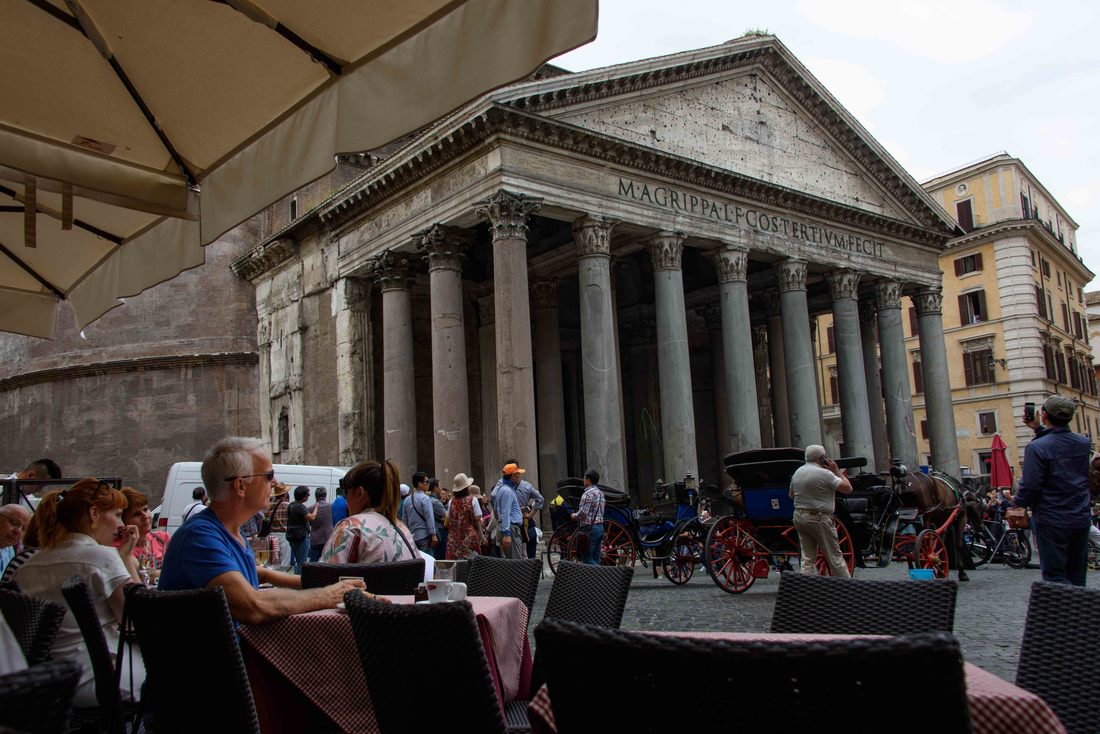
Sipping a cappuccino and listening to a cello player outside the Pantheon was a special moment. The Pantheon has the world's largest unreinforced concrete dome and in its center is a 9m circle open to the sky connecting the gods to the temple. All sorts of engineering and fun facts, for those so inclined, to be found here http://romeonsegway.com/10-facts-about-the-pantheon/
The high-speed train hurtling along at up to 300km/hour made the 1 hr trip from Naples to Rome the day’s high point for Rick-he insisted the speed pic be included-such a guy (& Allana) thing :) (Apr 24)
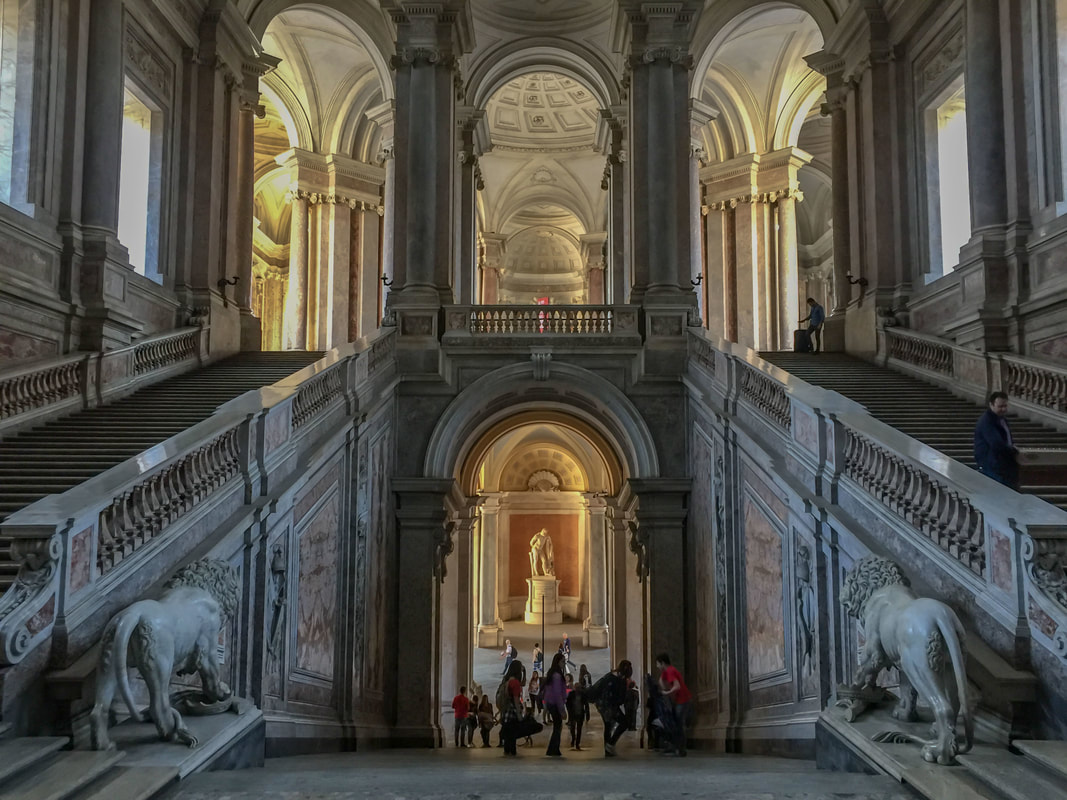
Not to be outdone by Versailles in France, a more grandiose palace (Reggia di Caserta) was built here in the mid-1700s. Even today, it is the largest royal residence in the world (measured by volume). Fun facts: 1200 rooms, 1470 windows, 34 staircases. Above: the staircase to the royal apartments and a series of waiting rooms for those fortunate enough to have an audience with the king.
(Caserta, Apr 23)
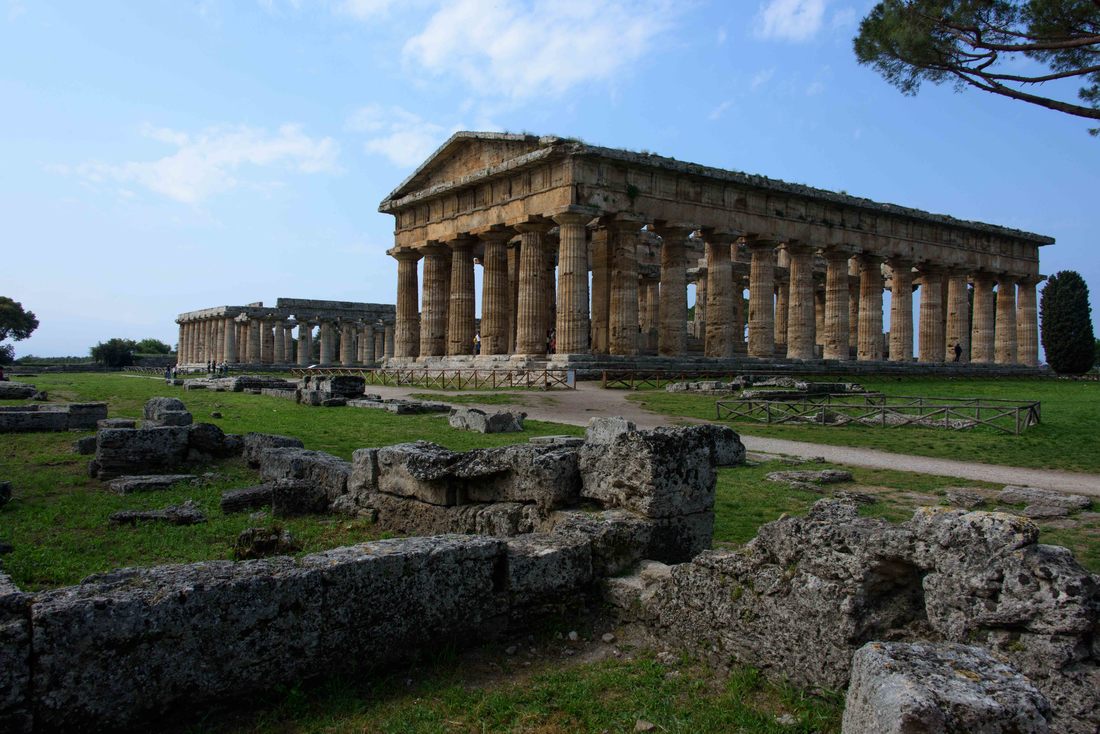
Greek colonizers established themselves here in the 6th century BC and left behind three of the world’s best-preserved ancient Greek temples. Oddly, the site attracts relatively few visitors and this along with the freedom to explore the entire settlement makes it especially easy to understand how life was lived so long ago. (Paestum, Apr 22)
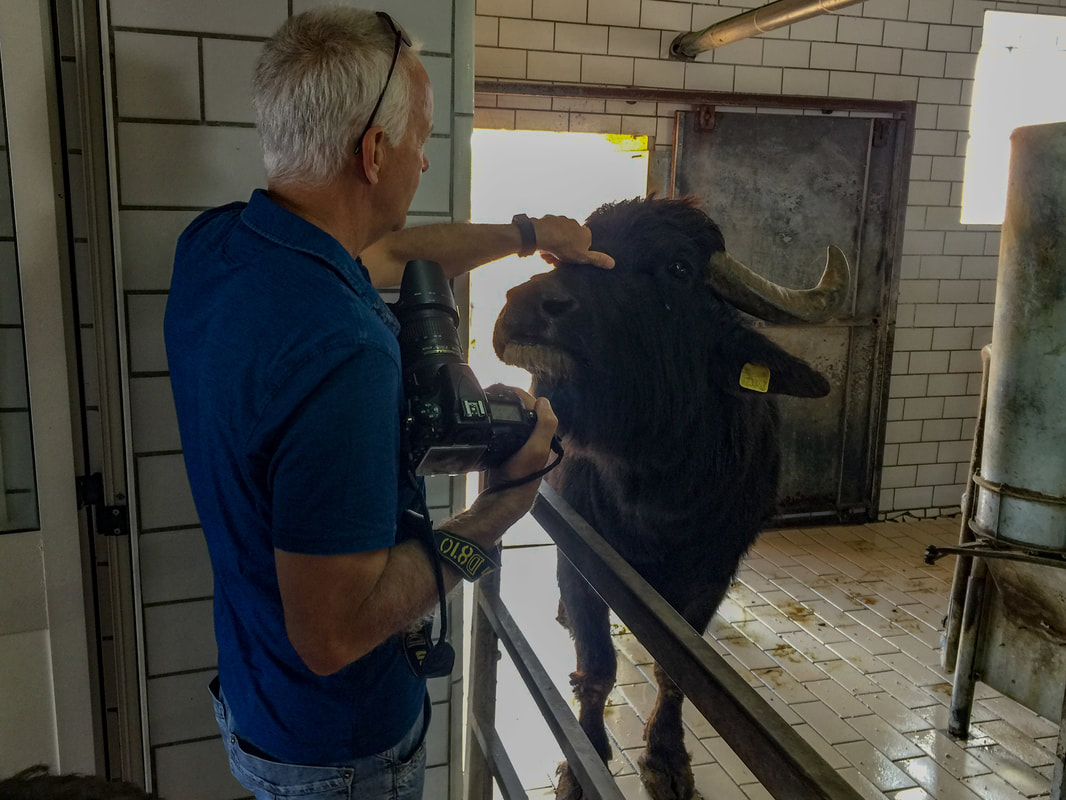
According to Forbes magazine the best buffalo mozzarella, a pizza staple, comes from Italy. And this organic farm is one of the country’s most prestigious. Among other stress relieving perks, the water buffalo listen to jazz and classical music and only get milked when they chose to enter the milking barn. Above: after finishing her turn, this cow decided to eschew the exit door for a scratch from Rick. (Paestum, Apr 22)
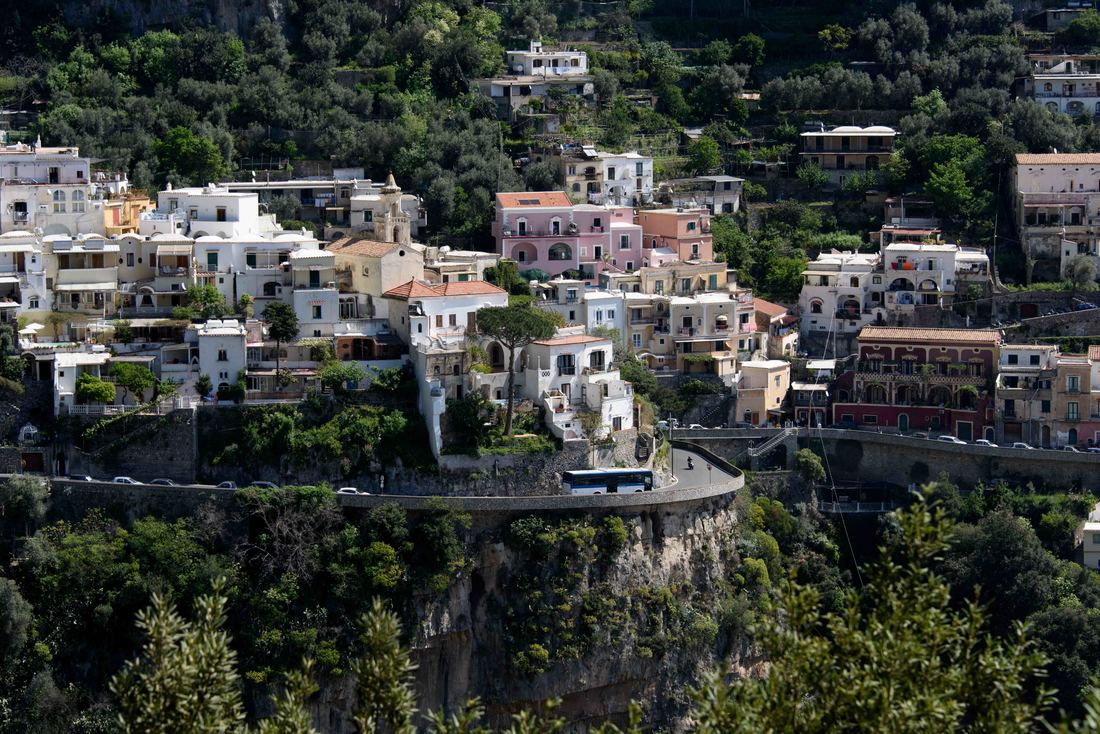
So scenic, yet adrenaline inducing... driving the serpentine Amalfi Coast, at times cantilevered over the rock face, was something out of a James Bond movie. With nowhere to pull over and Rick’s eyes firmly on the single lane that served as two, I tried to capture the beauty and chaos of the coastline. (Positano to Amalfi, Apr 21)

Terraced land supports groves of lemon trees, with the fruit of many destined for Limoncello-the regions specilaty. With a 30% alcohol content, if sipped cold as a finishing touch to a meal, it’s supposed to aid digestion. Although still a strong contributor to the economy many farmers are abandoning the labour intensive work leaving the terraces to crumble and the land more susceptible to landslides. Italy experiences 70% of all the landslides in Europe.
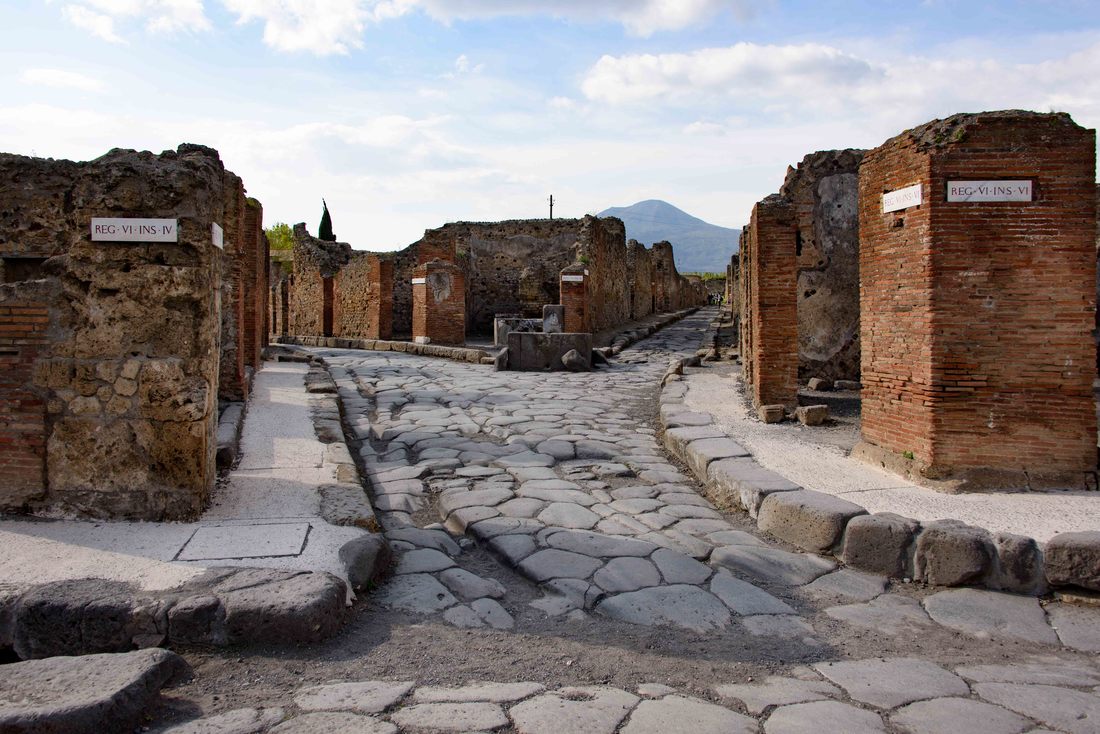
In its heyday Pompeii had a population of 11,000 and was peppered with villas owned by the holiday set. When Mount Vesuvius erupted the people were quickly killed by volcanic heated gases and then buried under meters of ash. Almost 2,000 years later a third of the city remains unexcavated, and will stay that way for the foreseeable future as the excavated structures continue to deteriorate under the pressure of tourism and the effects of Mother Nature. (Pompeii, Apr 18)
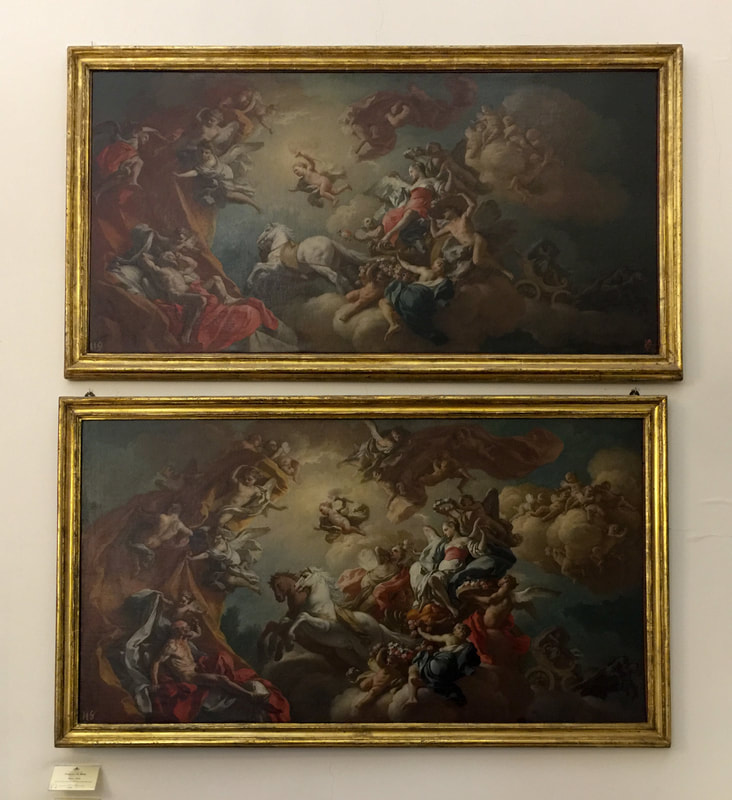
After art courses at home, Italy made the bucket list with the goal of seeing the best the ages offered. Being neophytes, we didn’t realize that when an artist was commissioned for a piece, he or she painted variations so that the buyer could select one to their liking. In a game of ‘what doesn’t look like the other’, it’s interesting to pick out the subtle differences between the above two. (Capodimonte Museum, Naples)
